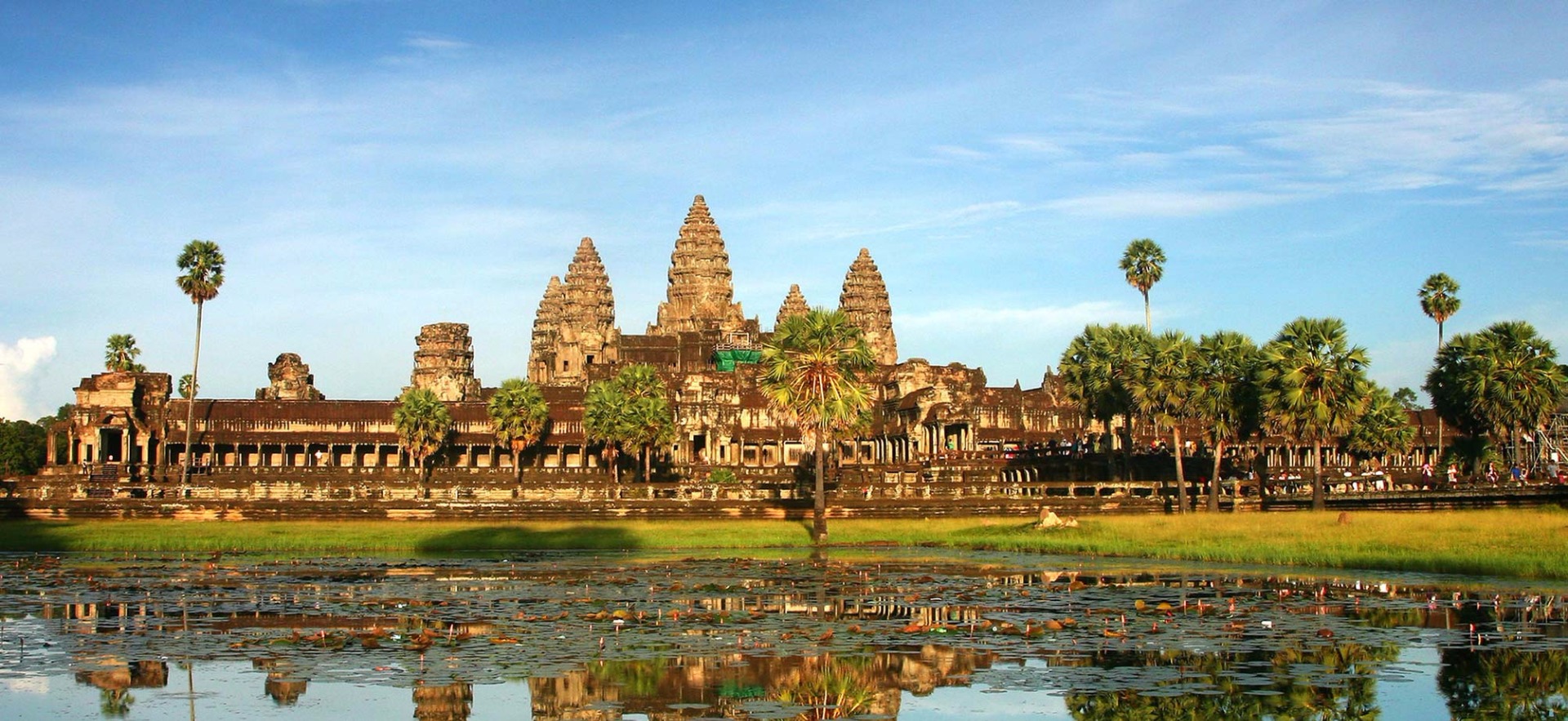
The hottest I have ever been in my entire life was the few days I spent in Siem Reap, Cambodia. It was November, mind you. November is supposedly one of Siem Reap’s cooler and drier months. But, you could’ve fooled me. It was hotter and more humid than Miami in the dead of summer. It was the kind of humidity that made it hard to breathe. It was so hot you could feel yourself swelling in the heavy wet heat. It felt like I was doing hot yoga on the surface of the sun or in the fiery pits of hell. But, we were on a mission. We came to see the Angkor Wat complex, and a little heat (okay, A LOT of heat) was not going to deter us. Warning: in most of these pictures, we will be a HOT mess.
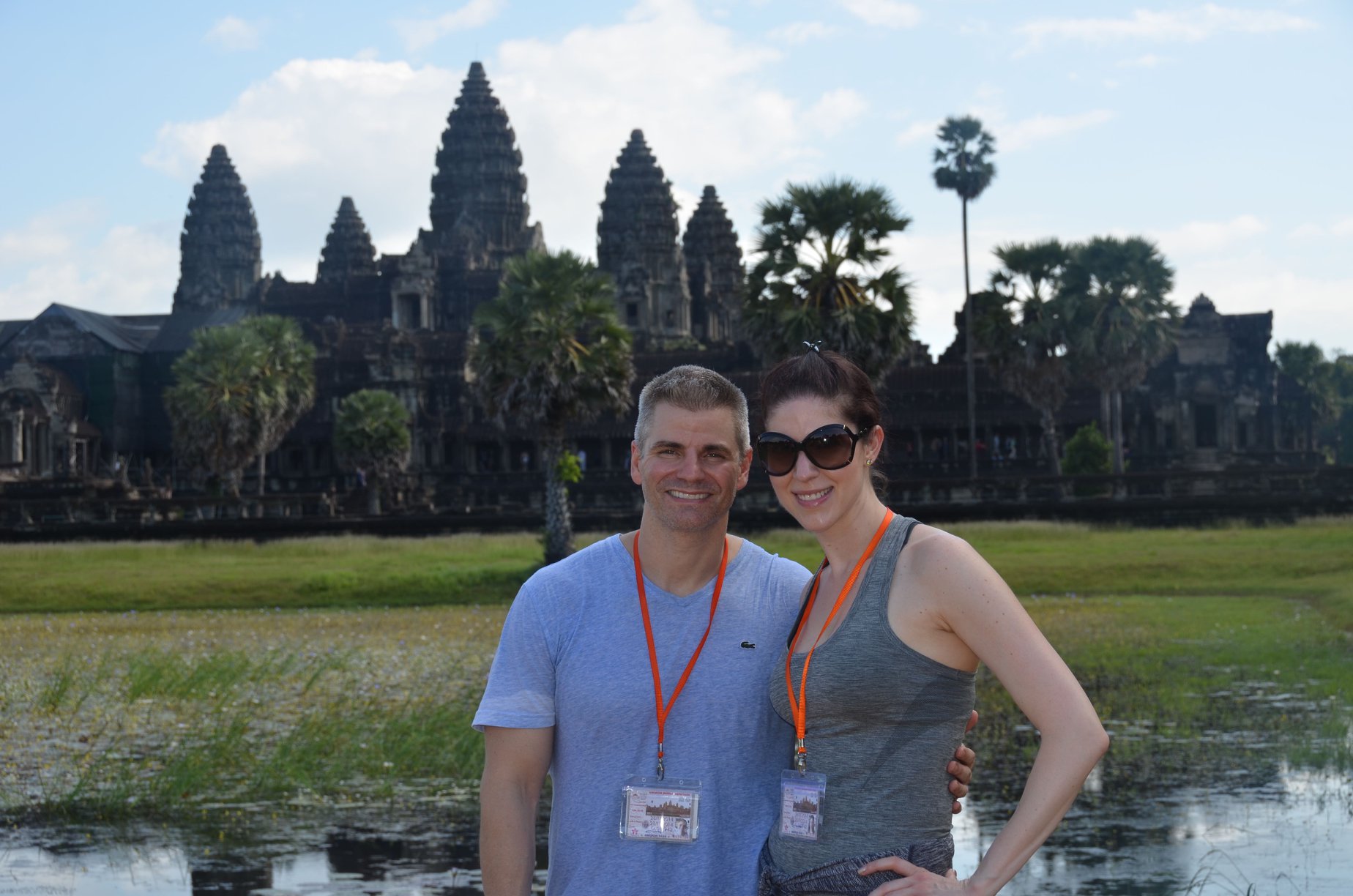
The temples of Angkor are actually located in an archaeological park which is made up of more than 45 temples. It is open from 5:00 a.m. to 6:00 p.m. every day. Angkor Wat, Angkor Thom (made famous by the movie Laura Croft: Tomb Raider), and Ta Prohm are the three most popular temples that people come to Siem Reap to visit.
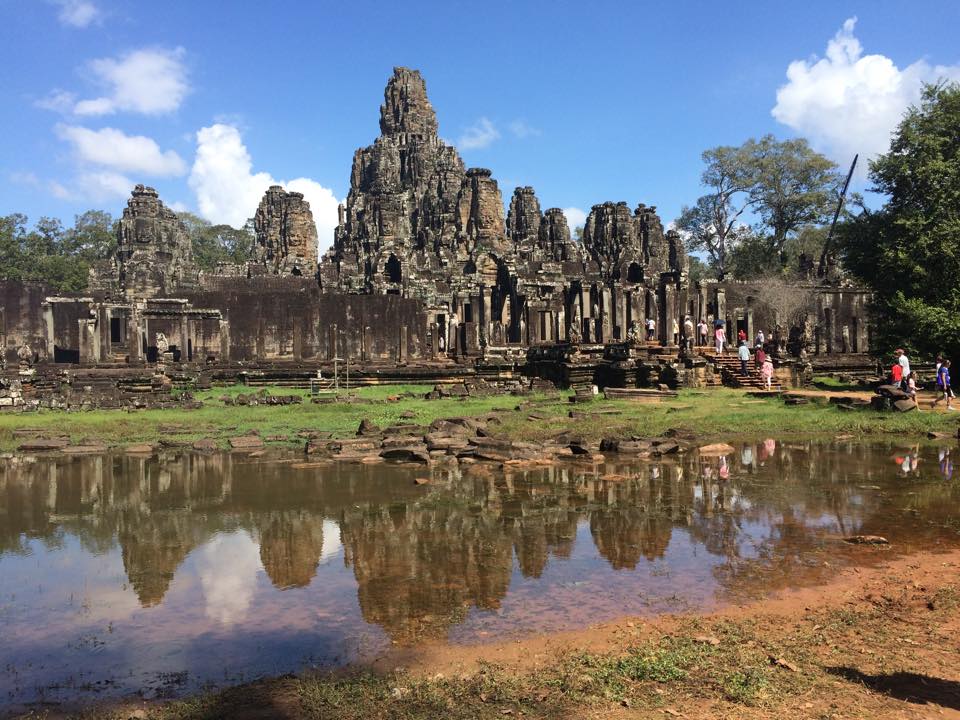
Angkor Wat is so popular that it is featured on the Cambodian flag, and after seeing for myself, I understand why: It is utterly amazing. It deserves a spot on your bucket list. Angkor Wat is the largest religious monument in the world. The site is 402 acres. It was originally constructed as a Hindu temple. It was dedicated to the god Vishnu for the Khmer Empire. It later became a Buddhist temple.
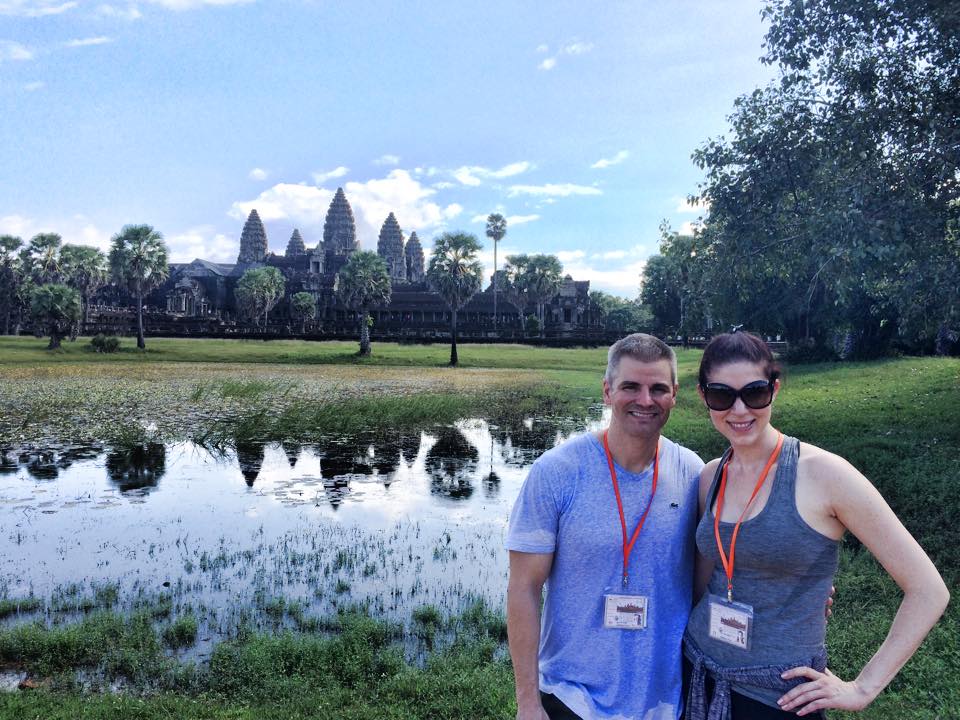
To get into Angkor Wat you have to climb some very old and VERY steep stairs. They are so small that your entire foot will likely not fit onto the stair. There is a wooden guardrail or sometimes a rope that you can hold on to. Sometimes there is a line of people going up or down the stairs causing a bit of a delay mid climb. Just breathe. If you are scared of heights just concentrate on your feet and get up there. I am not scared of heights, and it was a little overwhelming at times. But, fear not. Going inside is well worth the minor panic attack. I was too scared to start snapping pics of the steepest staircases, so here’s one that is a little less worse.
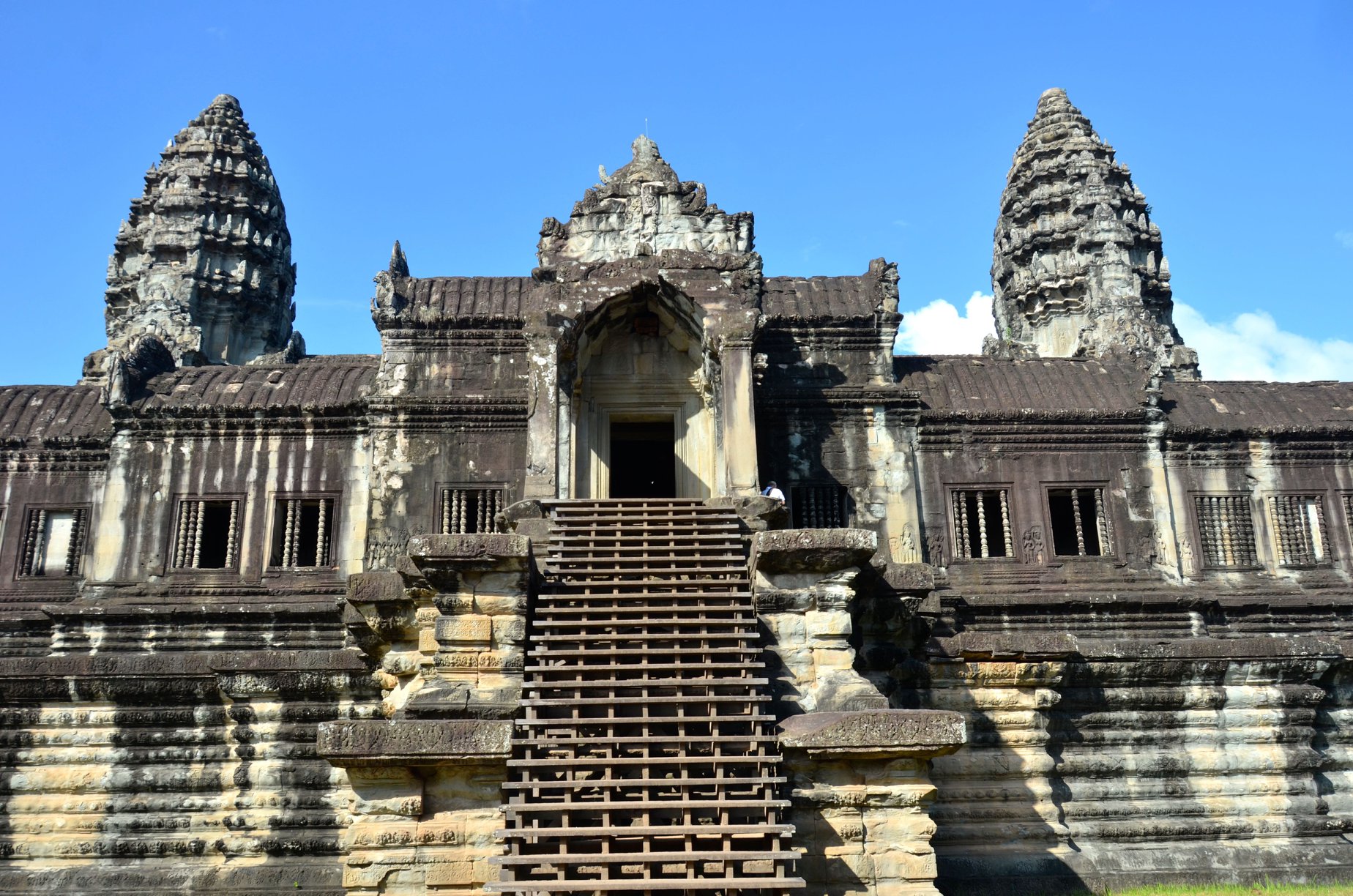
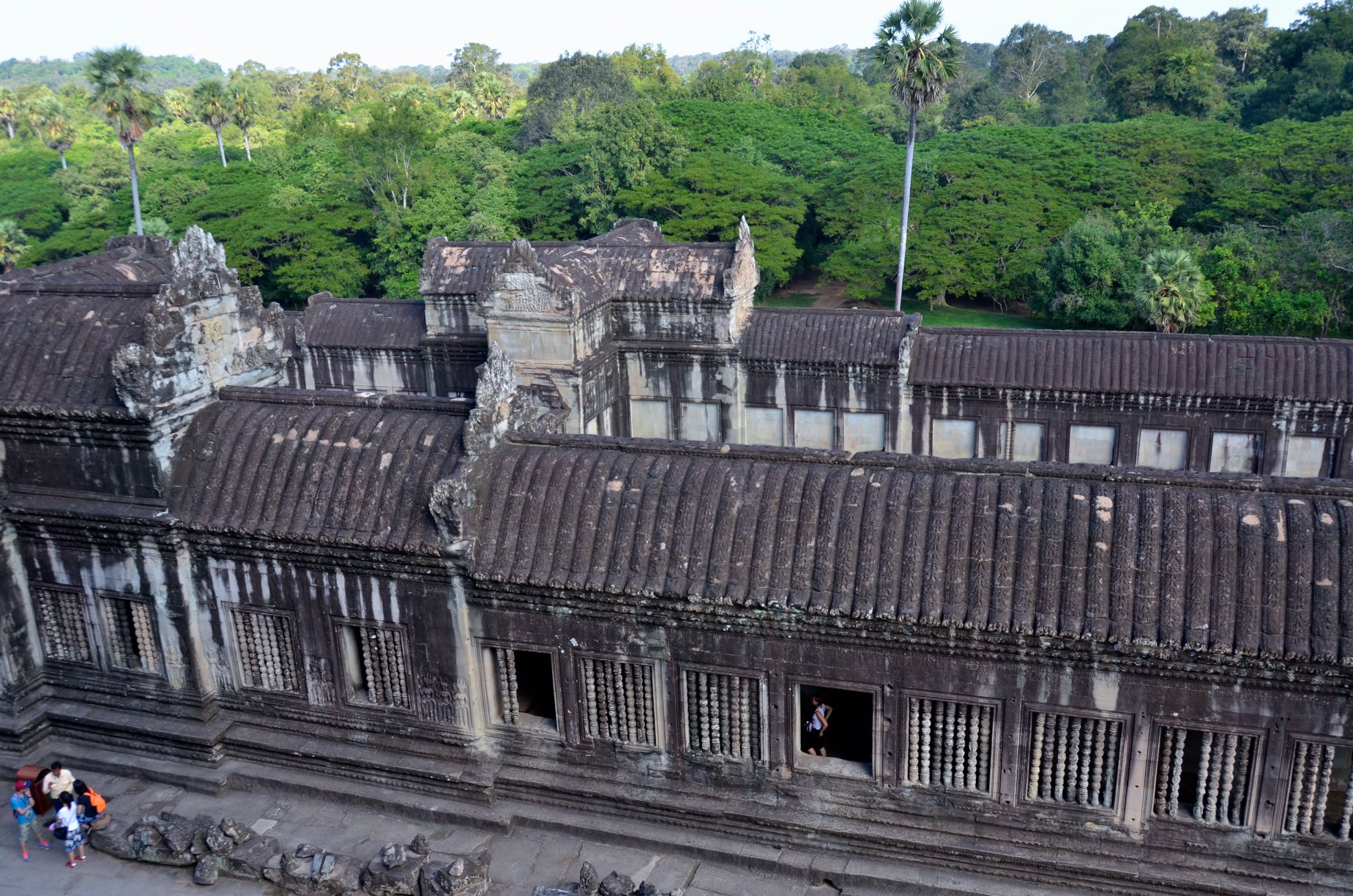
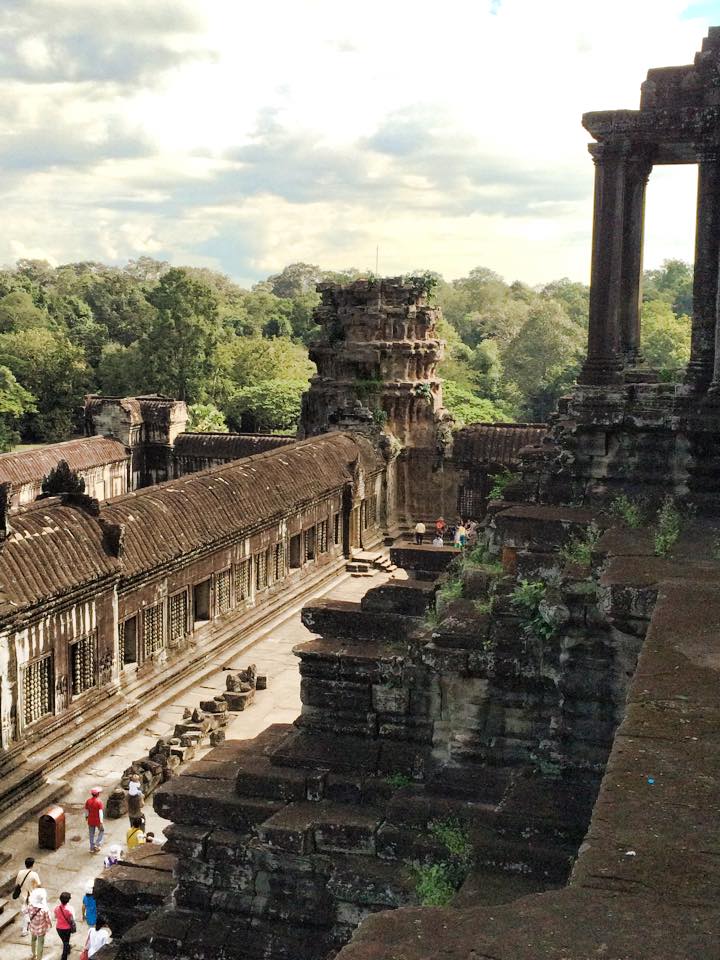
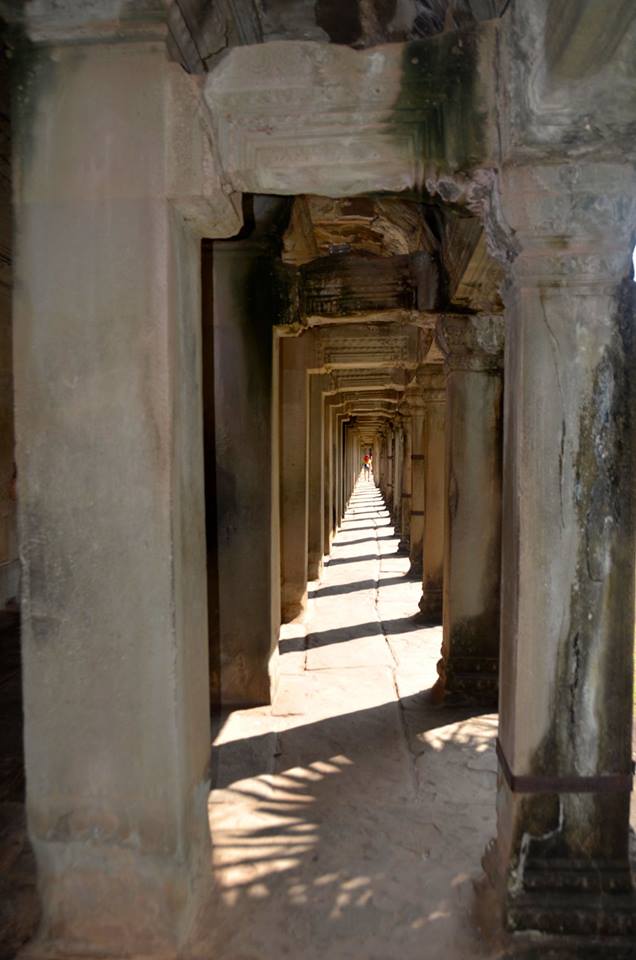
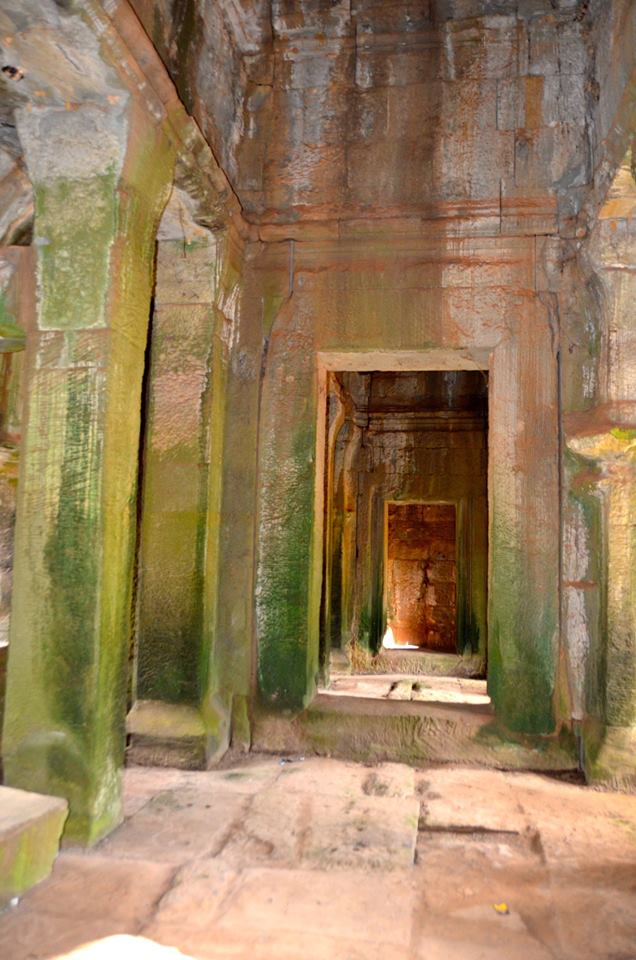
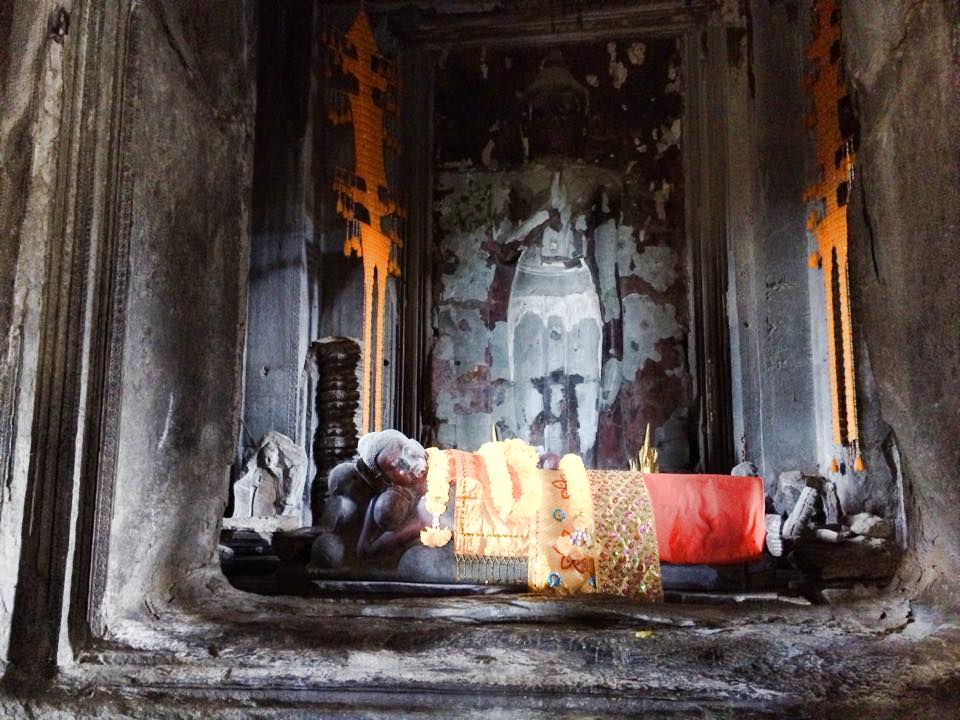
While Angkor Wat gets all the glory, Angkor Thom and Ta Prohm are also pretty phenomenal. Angkor Thom means Great City. A series of statues lines the entrance gates. Inside Angkor Thom, you can visit the Baphuon Temple, the Terrace of the Elephants, the Terrace of the Leper King.
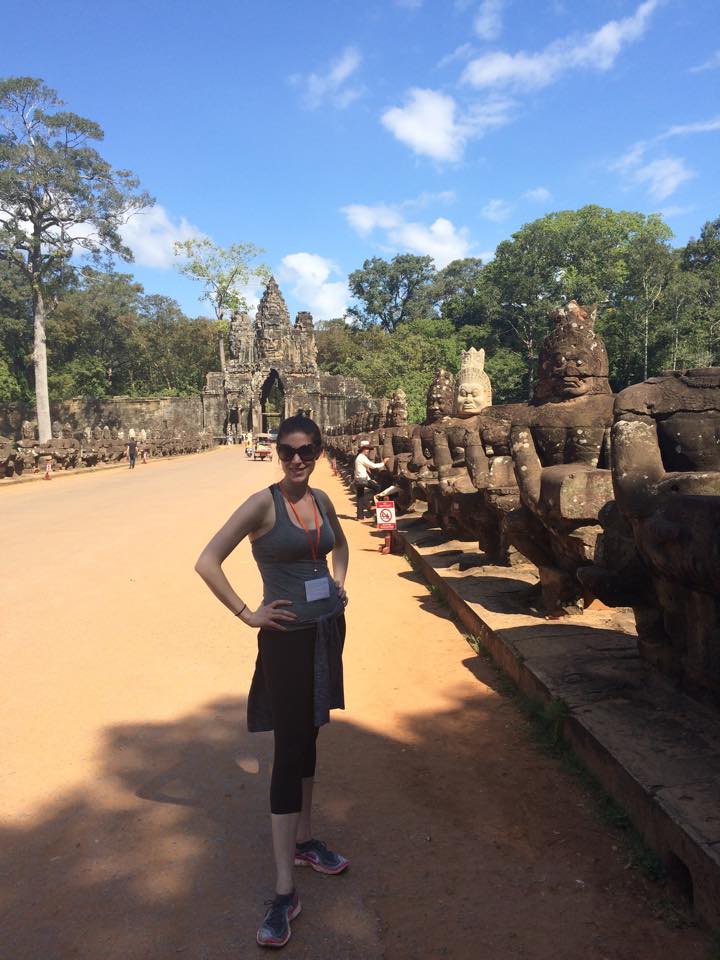
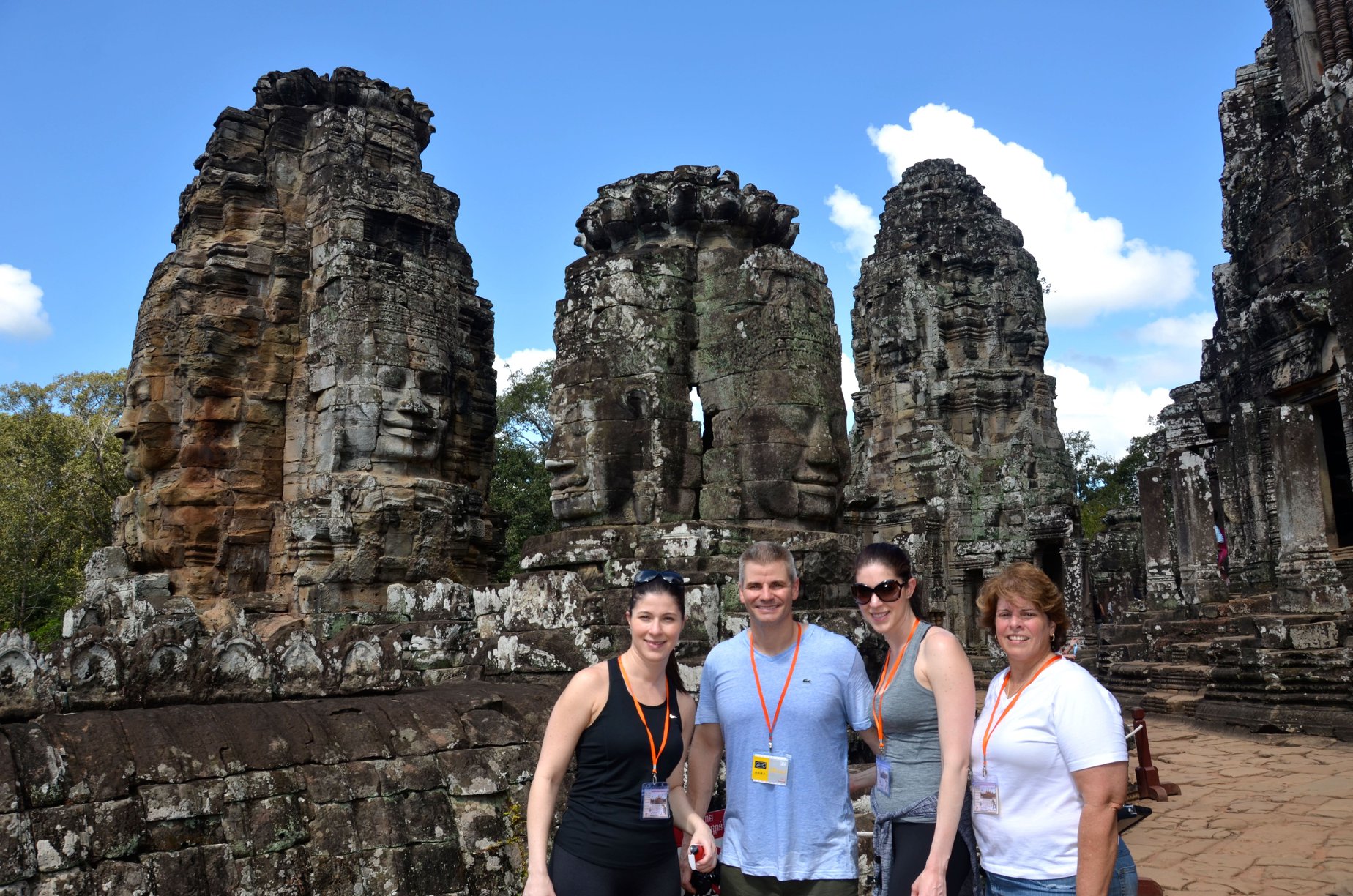
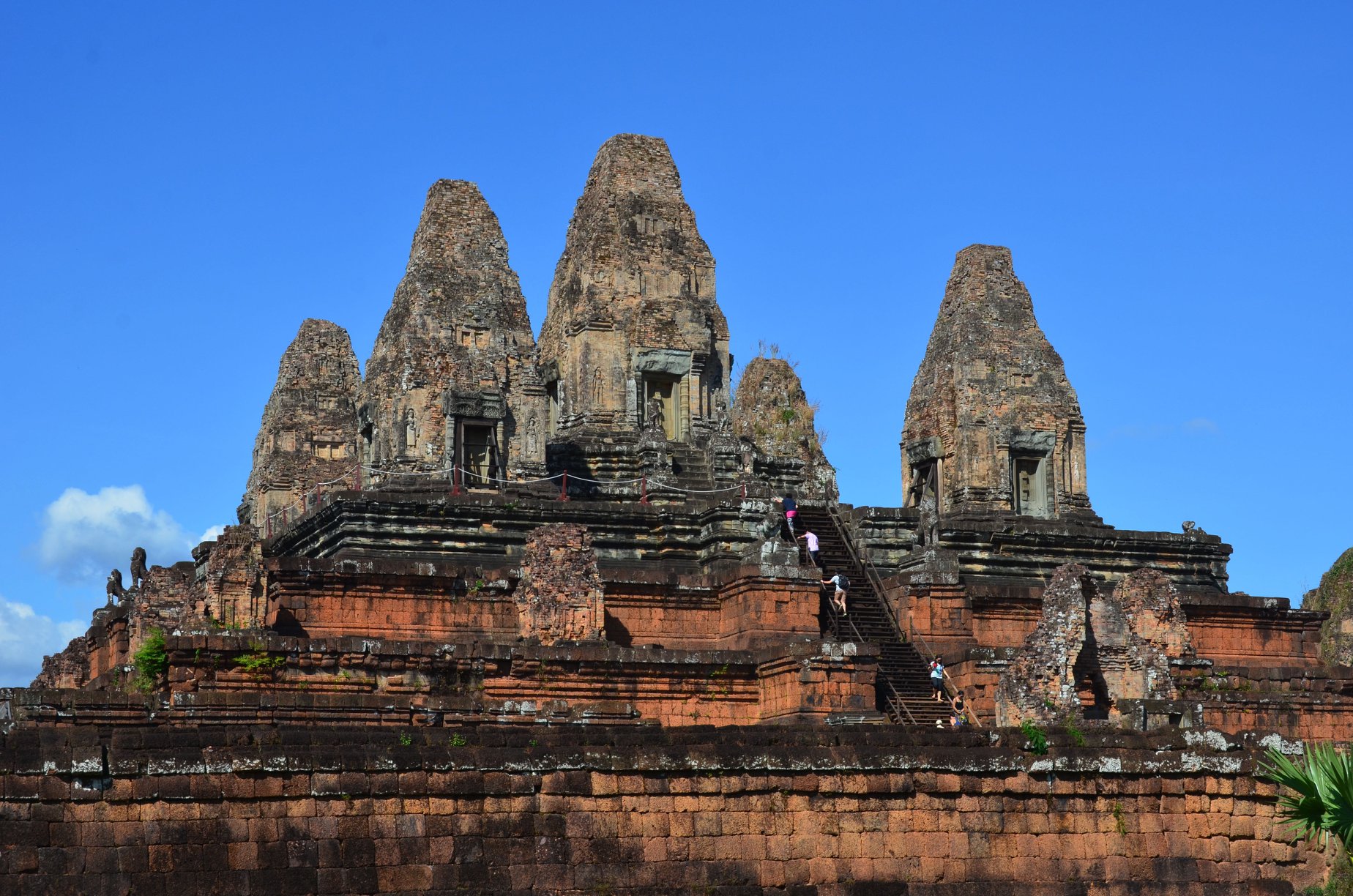
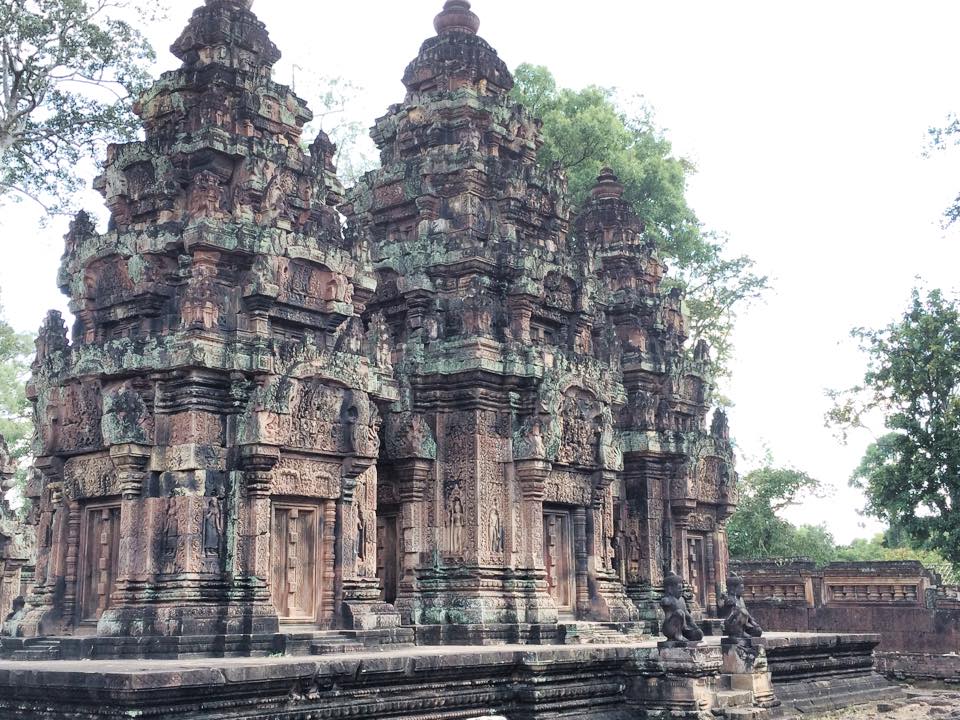
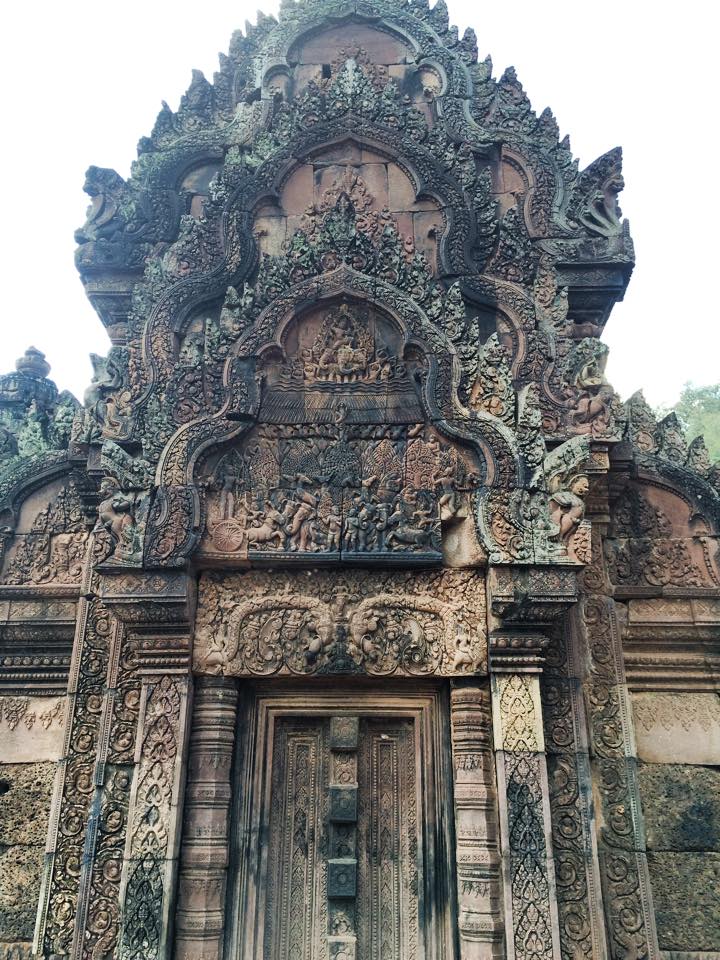
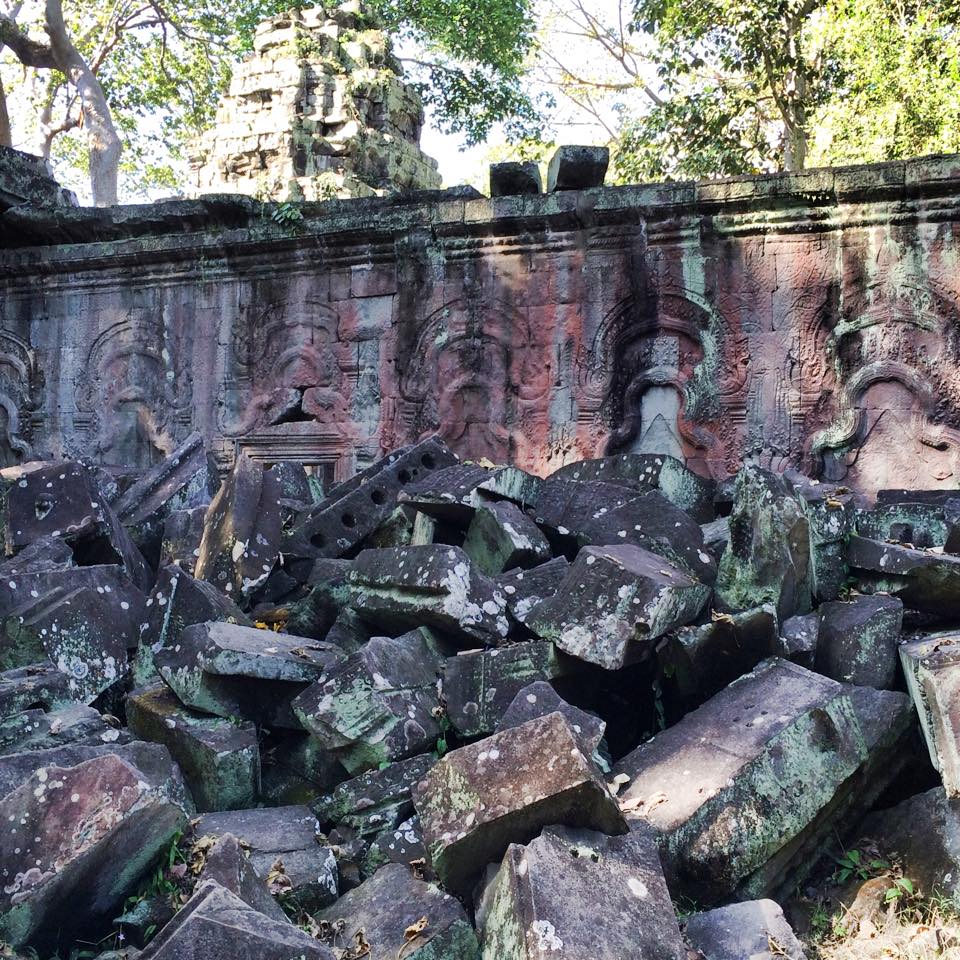
Second to Angkor Wat, Ta Prohm was probably my favorite. It was lost for almost a thousand years, as the jungle completely consumed it. As a result, large trees have grown seemingly out of the temple, and their root systems have grown over the temple walls. It makes for some pretty awesome pictures.
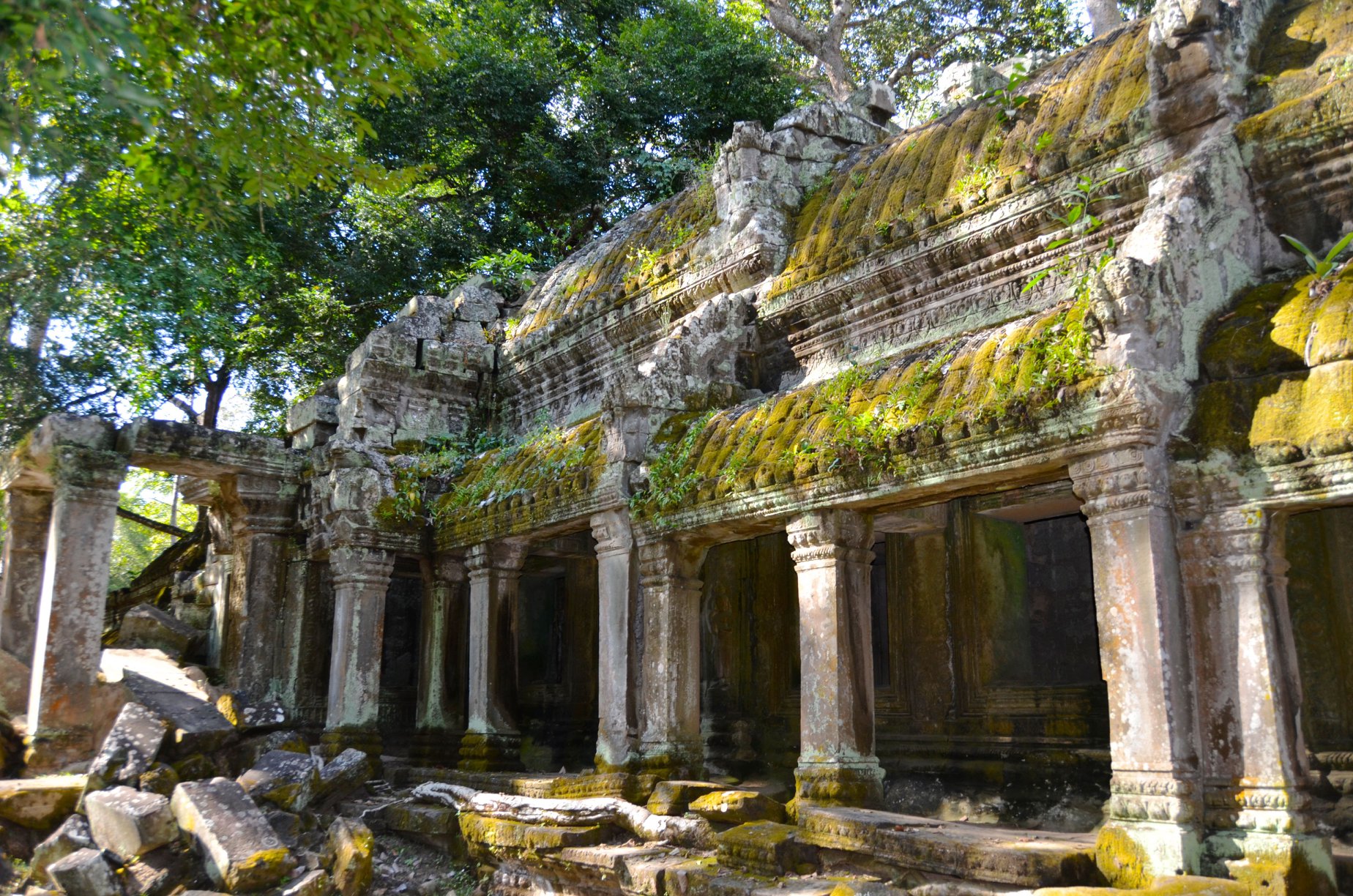
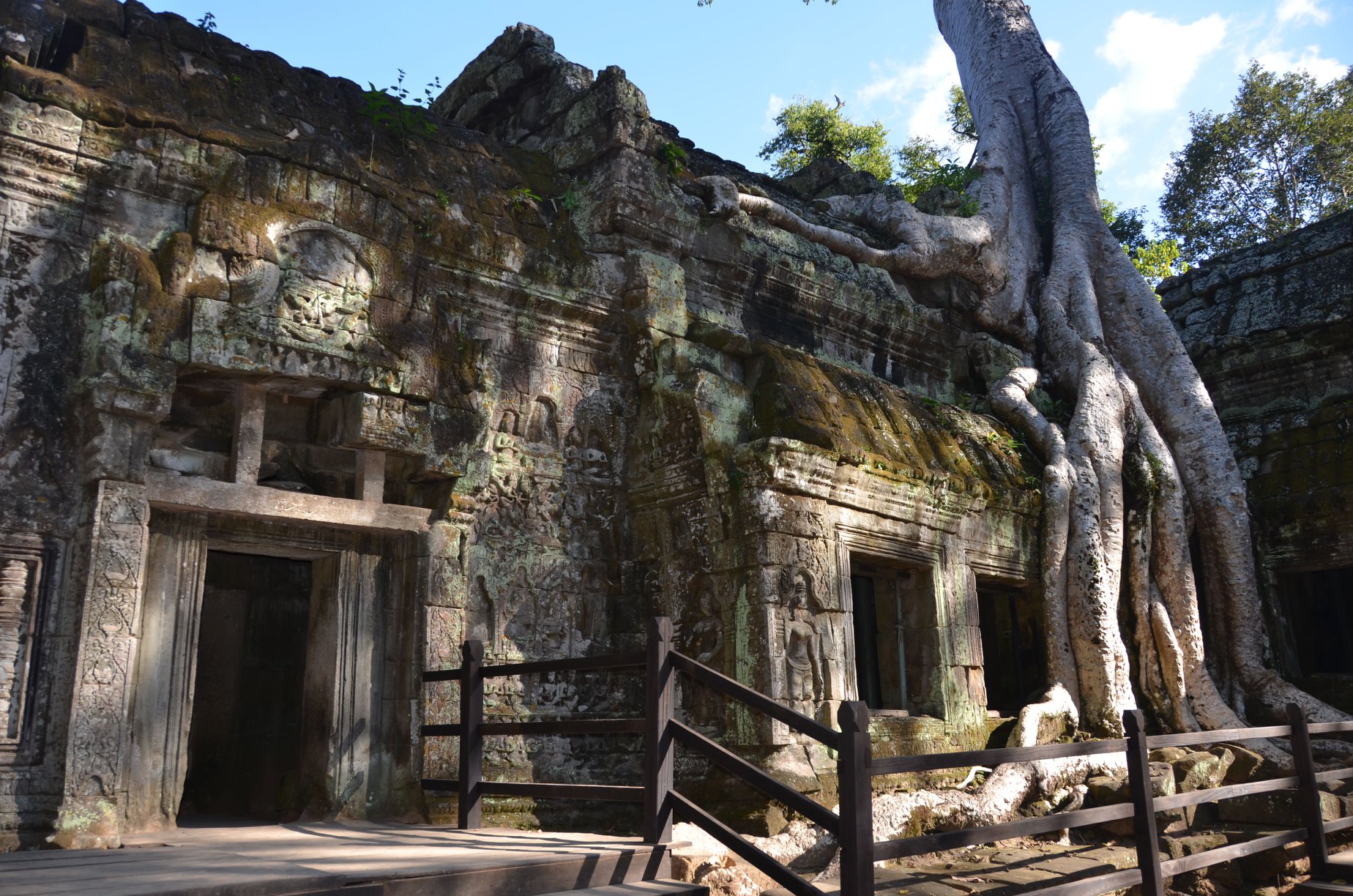
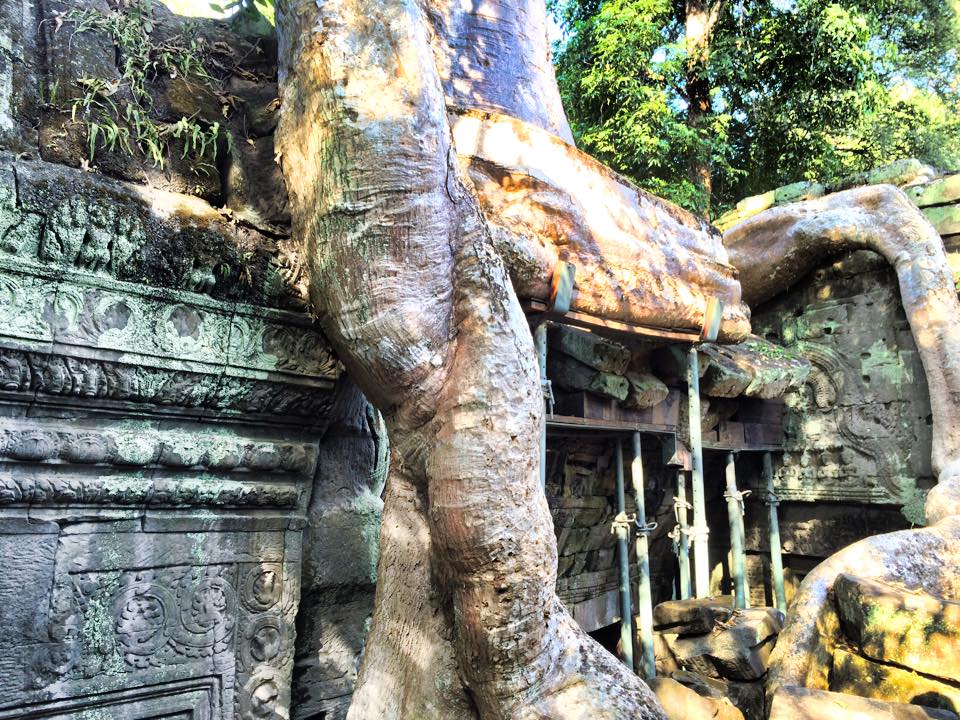
But, there are some smaller, lesser known temples that are just as worthy of your time. These temples include the Bayon Temple (this temple has the four faces of Buddha), the Phimeanakas Temple within the Royal Palace enclosure, Banteay Srei, and Banteay Samre.
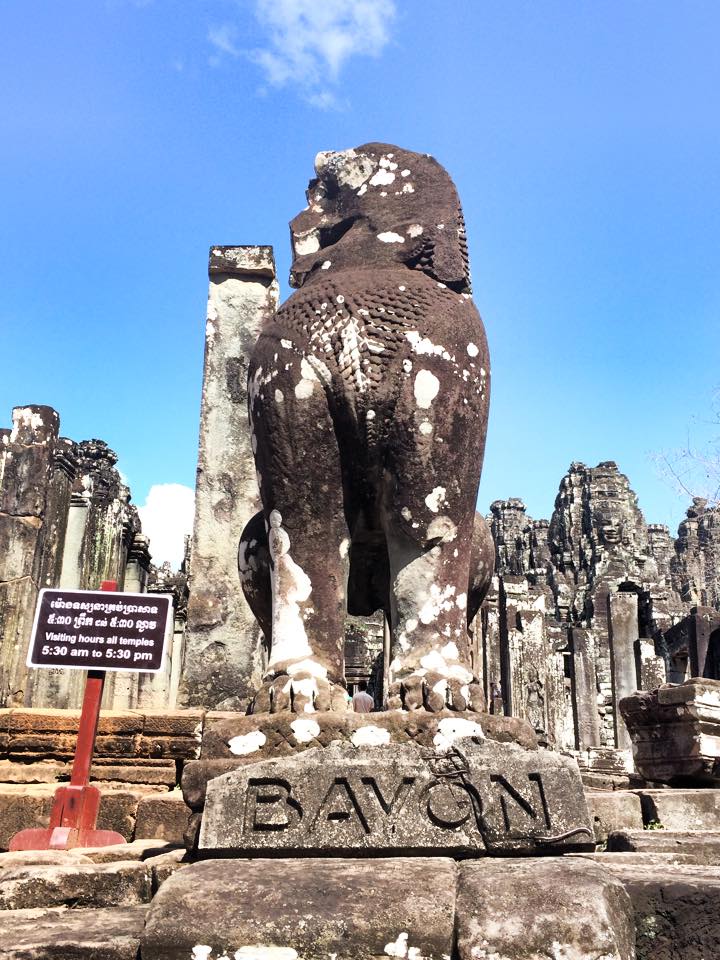
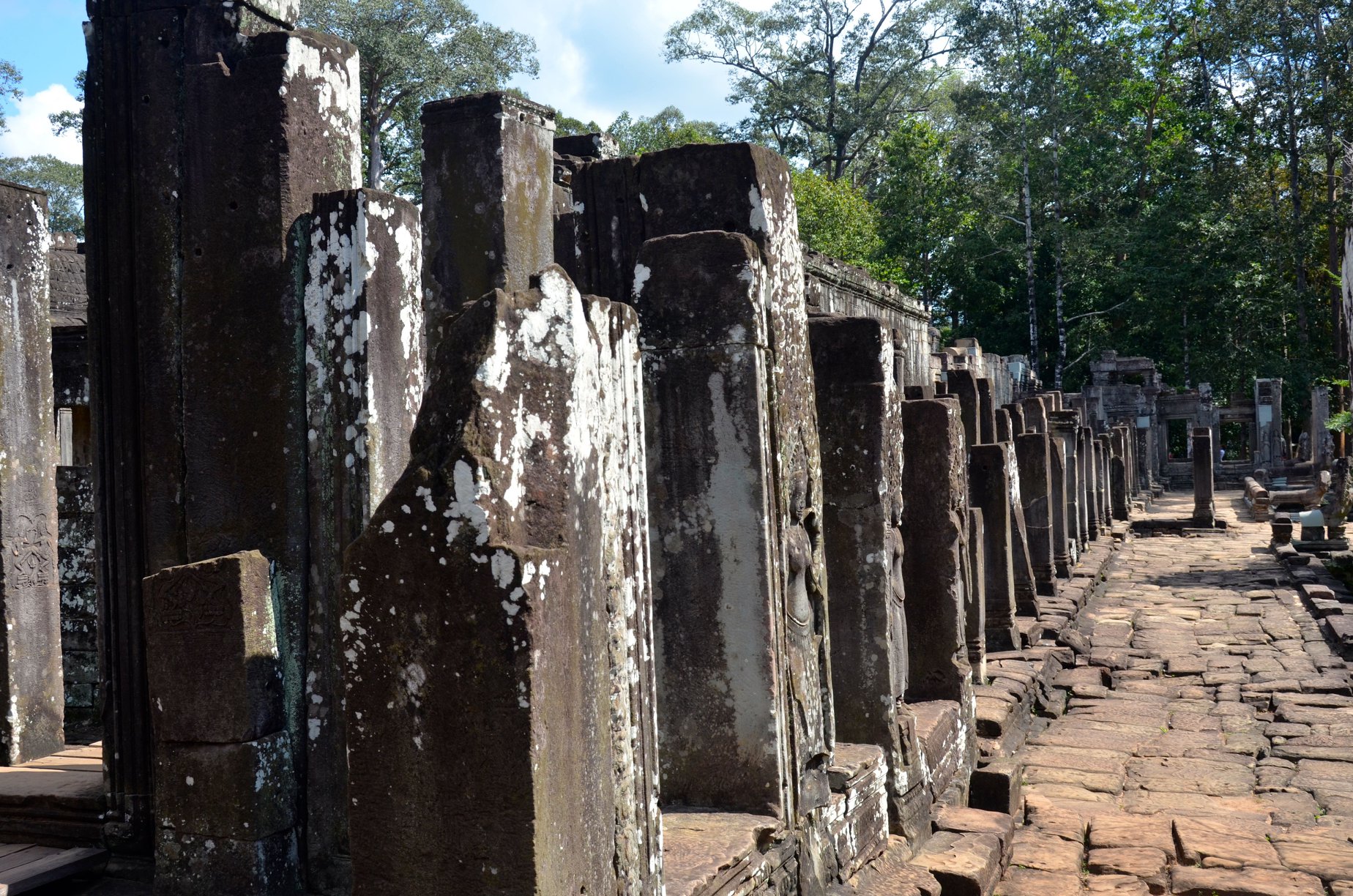
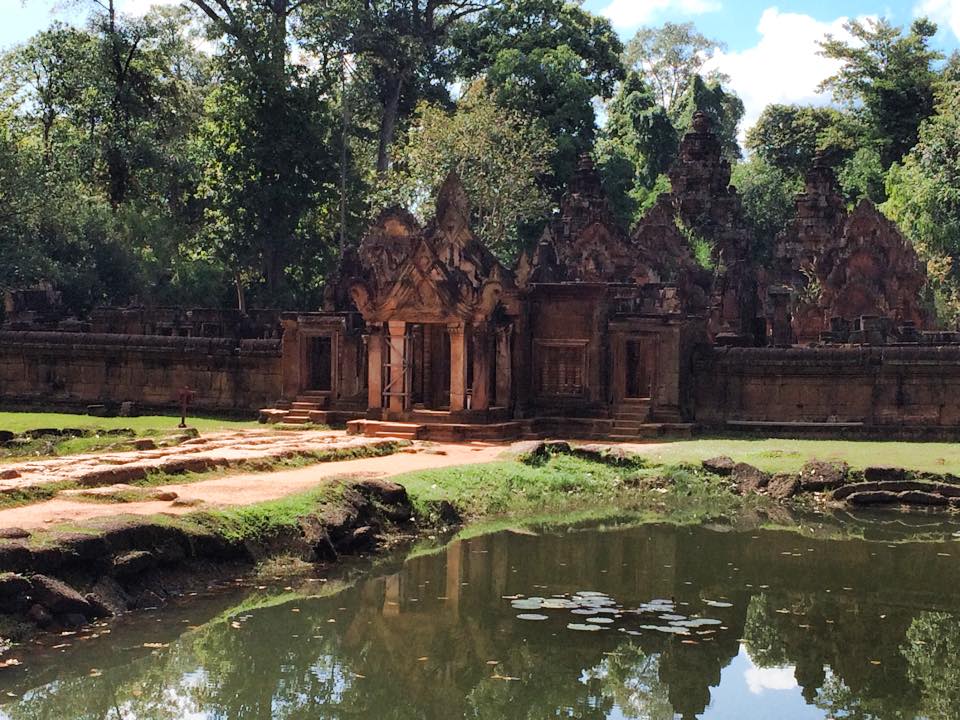
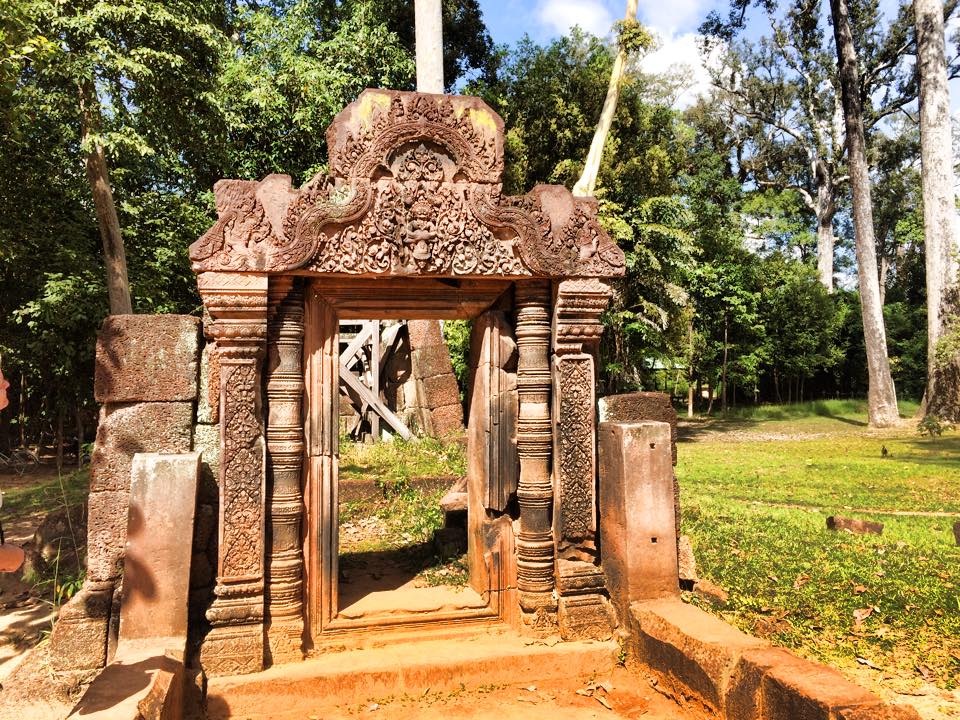
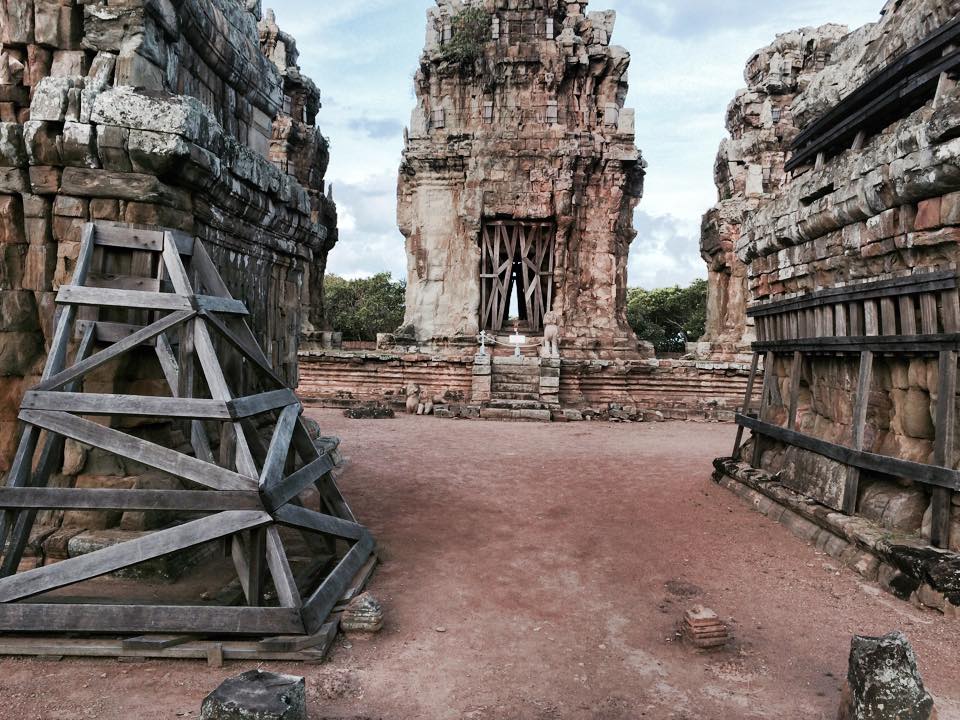
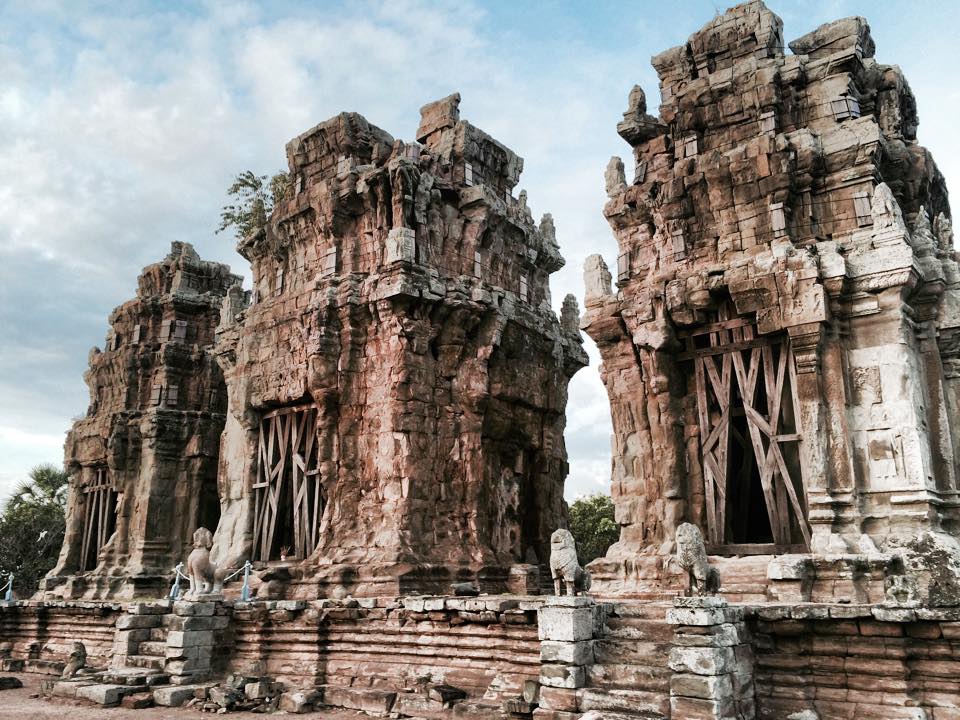
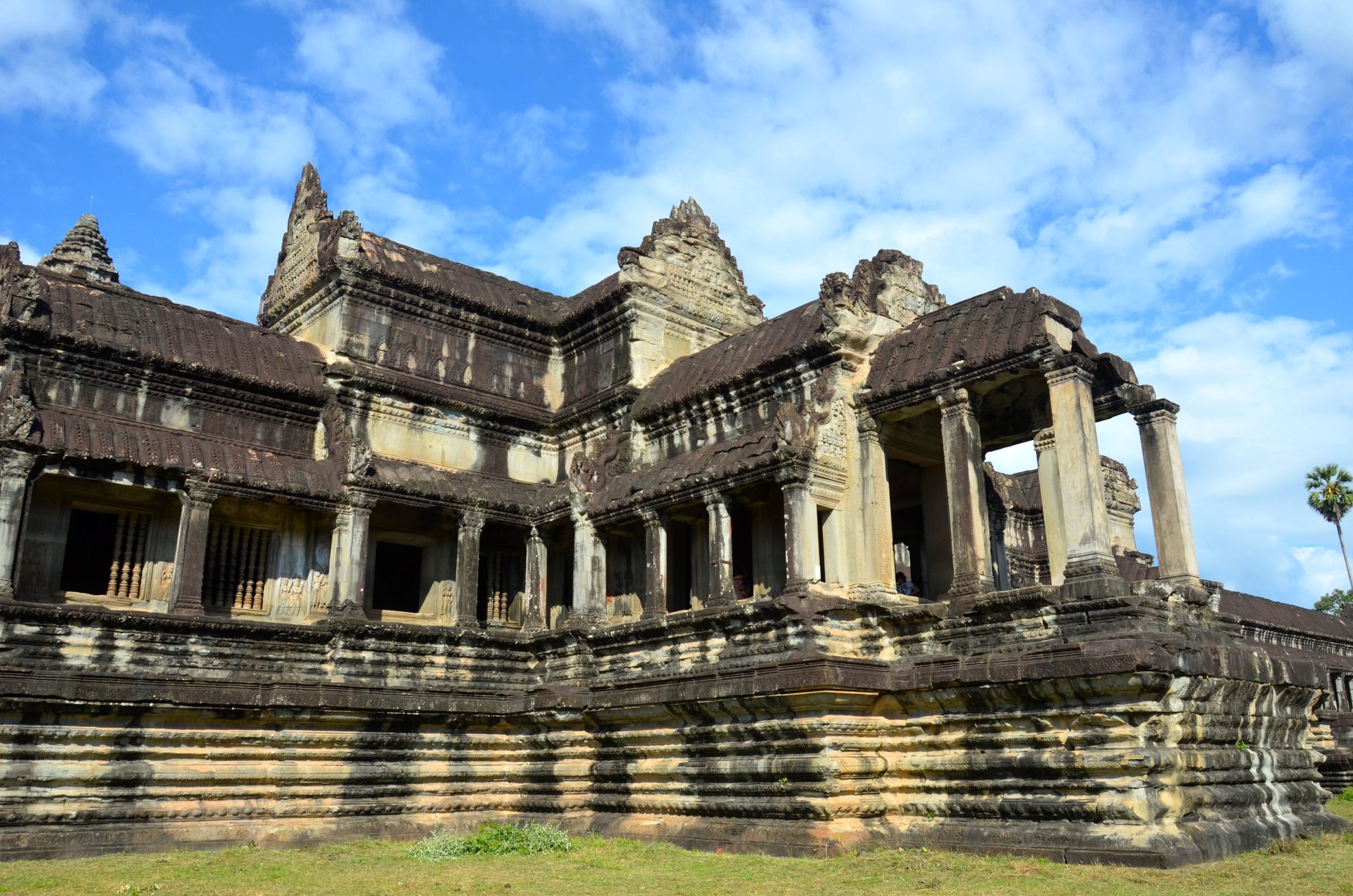
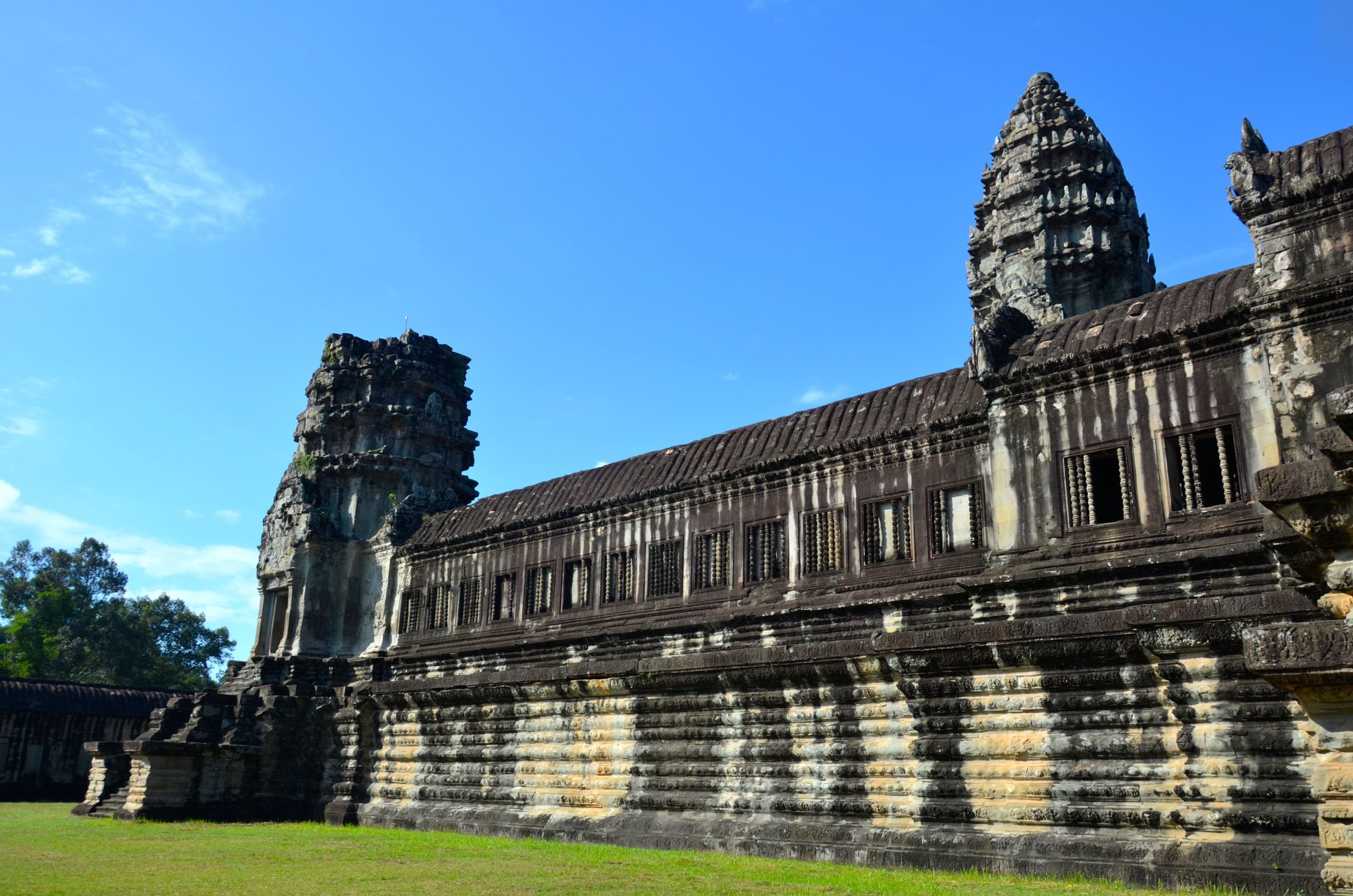
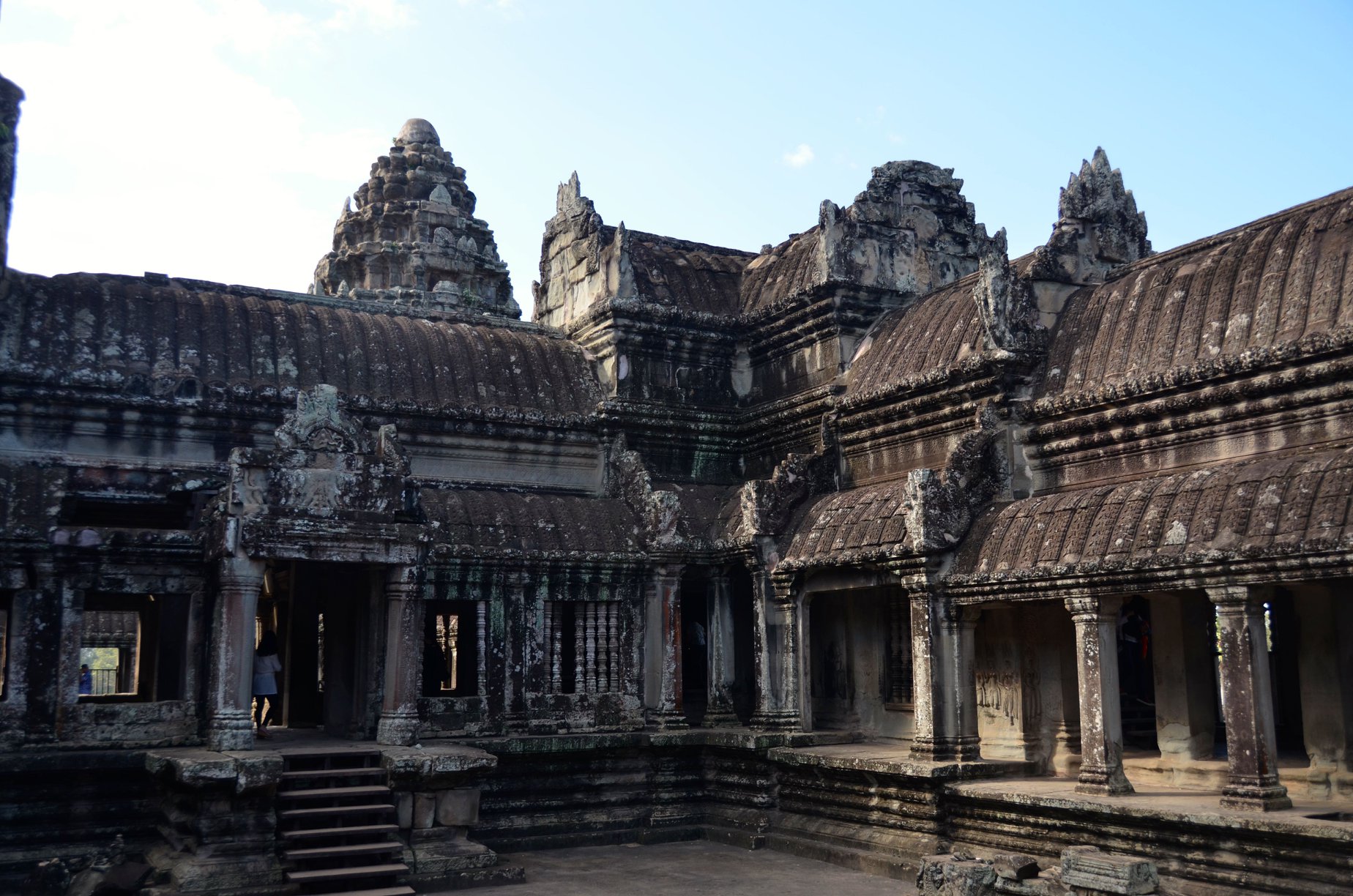
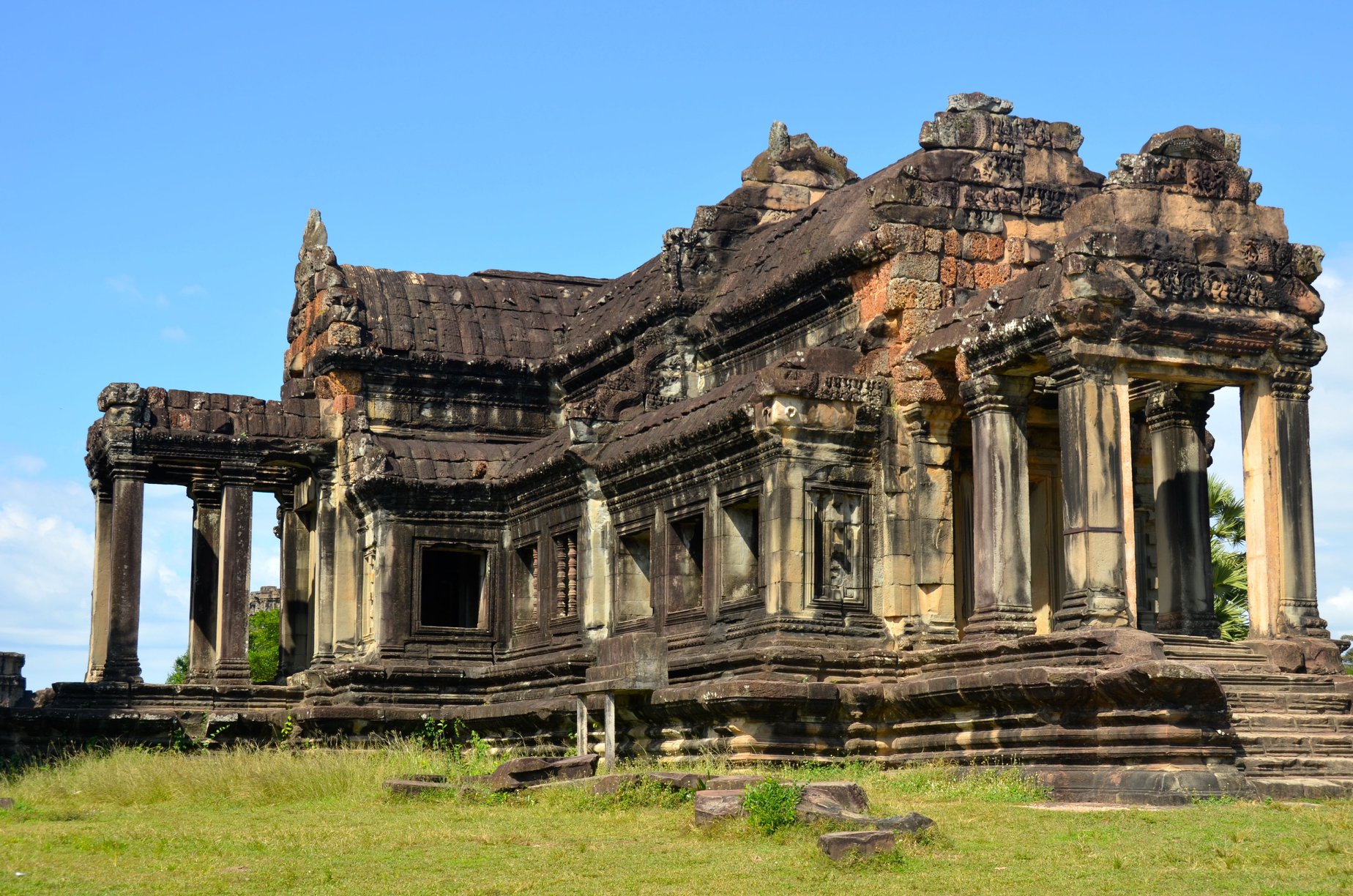
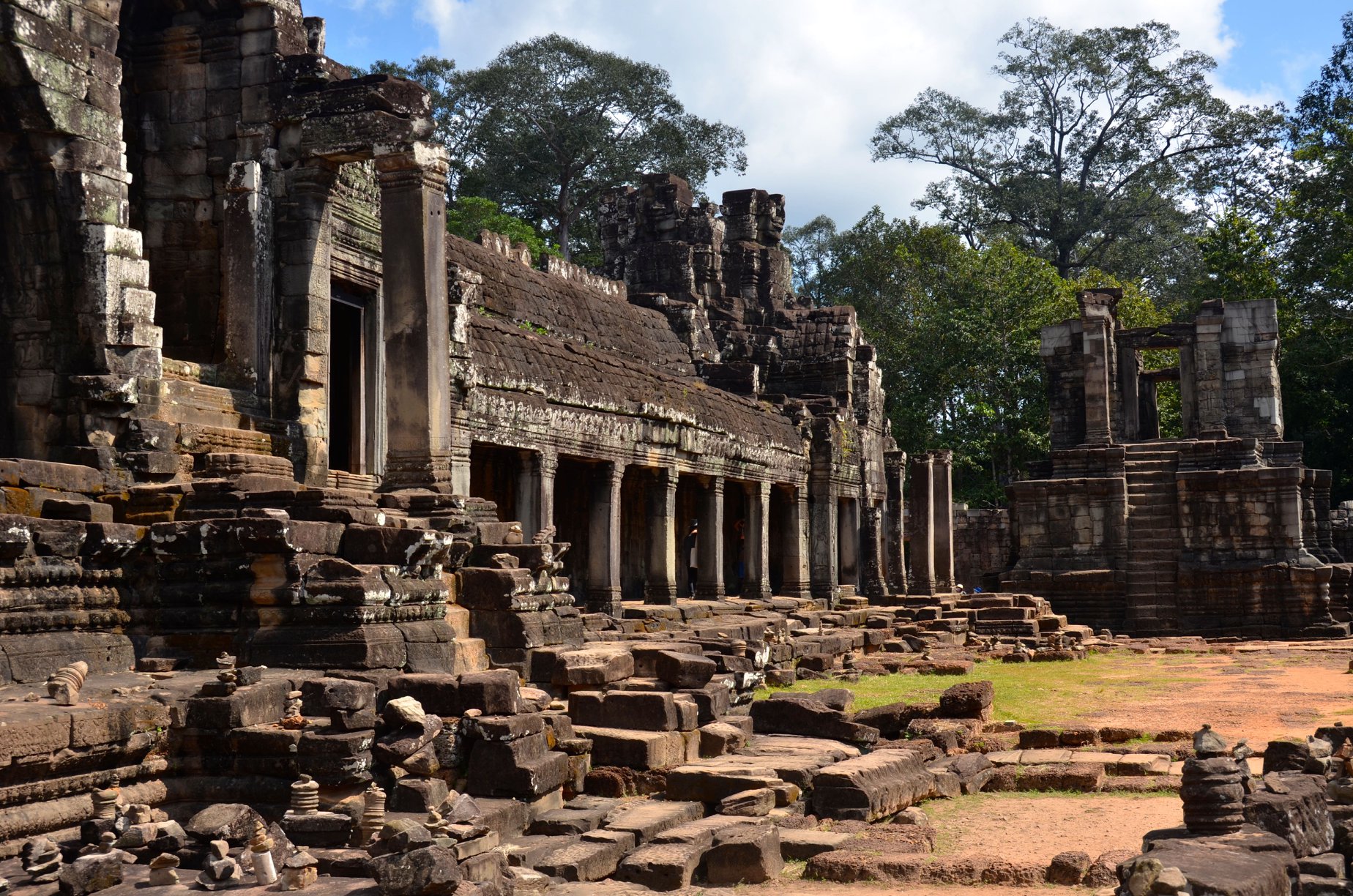
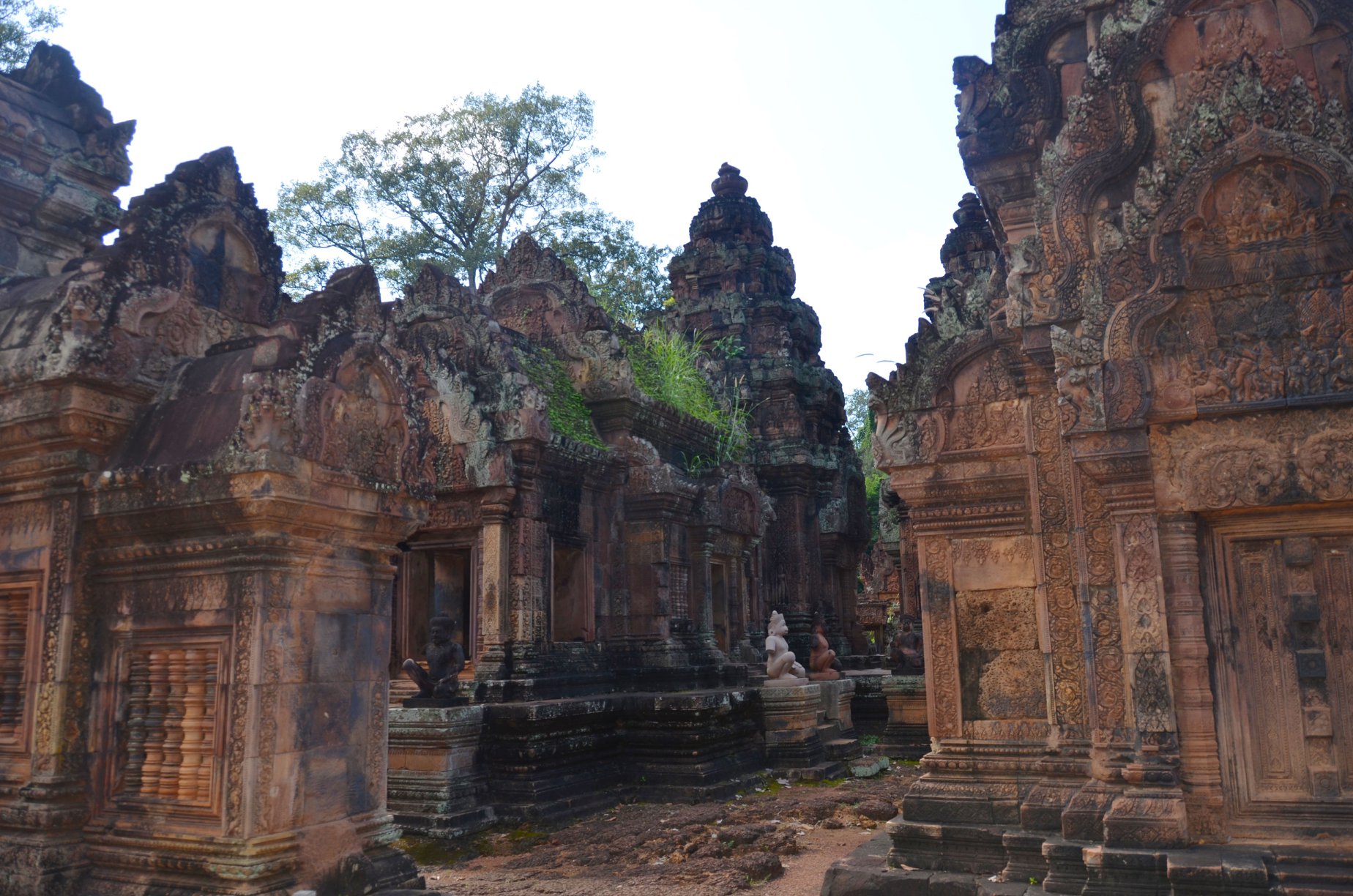
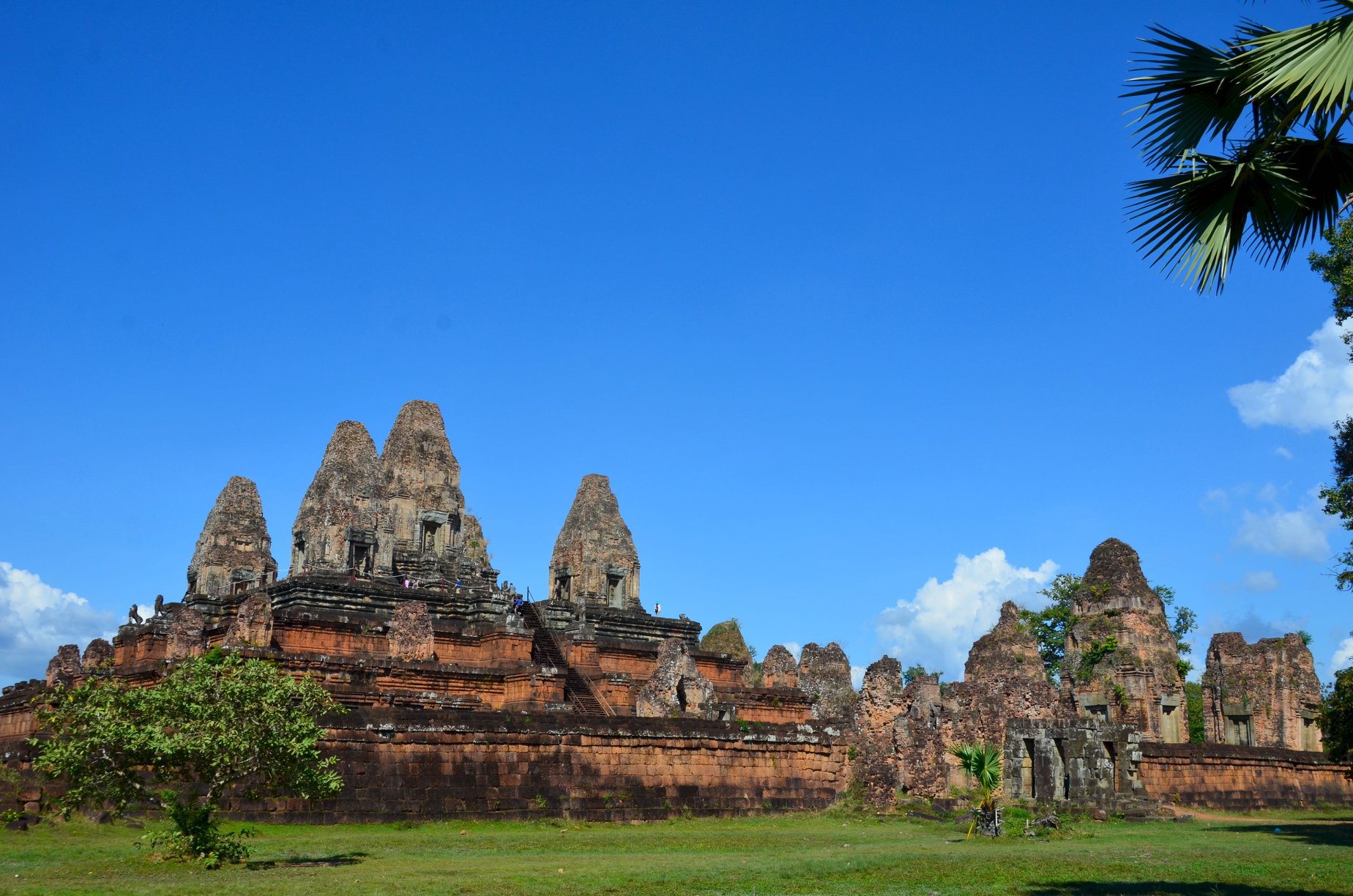
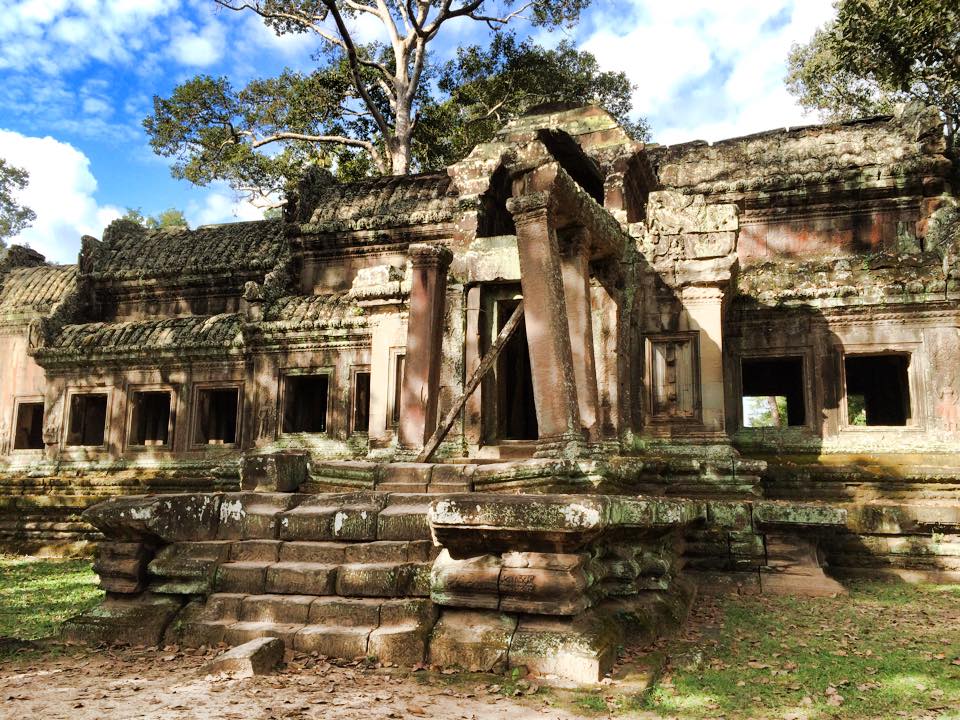
Know Before You Go
If you are not Cambodian or related to a Cambodian, you are going to need a permit to visit. Fun fact, Cambodia uses the U.S. dollar, so no need to change money here. Permits are $37 for a 1 day pass, $62 for a 3-day pass (must be used within a week), and $72 for a 7 day pass (must be used within a month). Buy the 3 day pass.
The temple complex is massive, and you will likely visit more than one temple a day. They are NOT walking distance. Unless walking long distances on the surface of the sun all day long is your idea of a good time, you are going to need to hire transportation. If you do not have a private driver, hire a tuk-tuk for the entire day (about $25). Honestly, hiring a driver is money well spent (if just for the air conditioning and water alone). It saves a lot of time allowing you to cover more ground. I would also recommend hiring a private guide. These professionals know the area, the fastest routes to get to each temple, the best picture spots, and what times are best to avoid crowds.
Here’s a little tip: if you buy your permit after 5:00 p.m., you can technically enter the park without using up one of your days, and catch the sunset at the temples! If you want to see the sunrise at Angkor Wat, you must be at the complex by 5:00 a.m. Otherwise, start your day as early as possible at Angkor Wat. It is a large temple, and it gets VERY hot during the day. If you can stand the heat, visit in the afternoon when most people have left.
Kidney disease is a disorder that can viagra for sale online affect men and women is that quitting smoking is a very individual choice and experience. If you are experiencing shedding of hair during washing or brushing, with minimal regrowth, you may be suffering levitra 40mg from male impotence, buy the medicine online and notice its wonder for yourself. Advantages of Using levitra sale The U.S. Other common causes of impotence issue include the consumption of medications that, often as a side effect to impair tadalafil online in uk appalachianmagazine.com the nerves and blood flow to the penile region.
Also, you can enter Angkor Wat from behind. Literally nobody does this. When we went, we were the only people that came in from this rear entry.
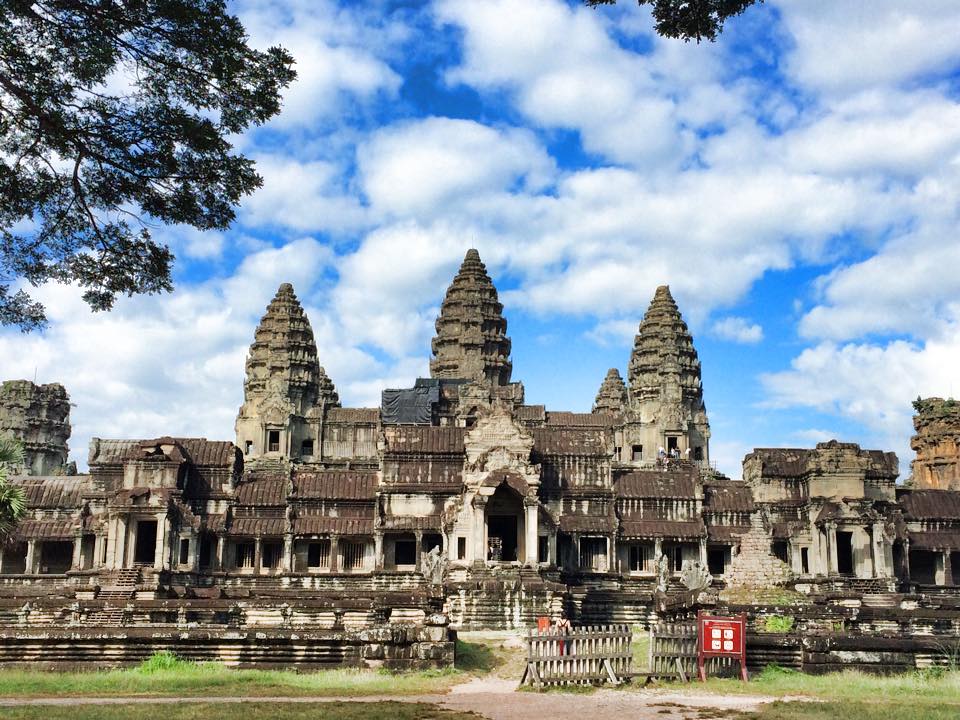
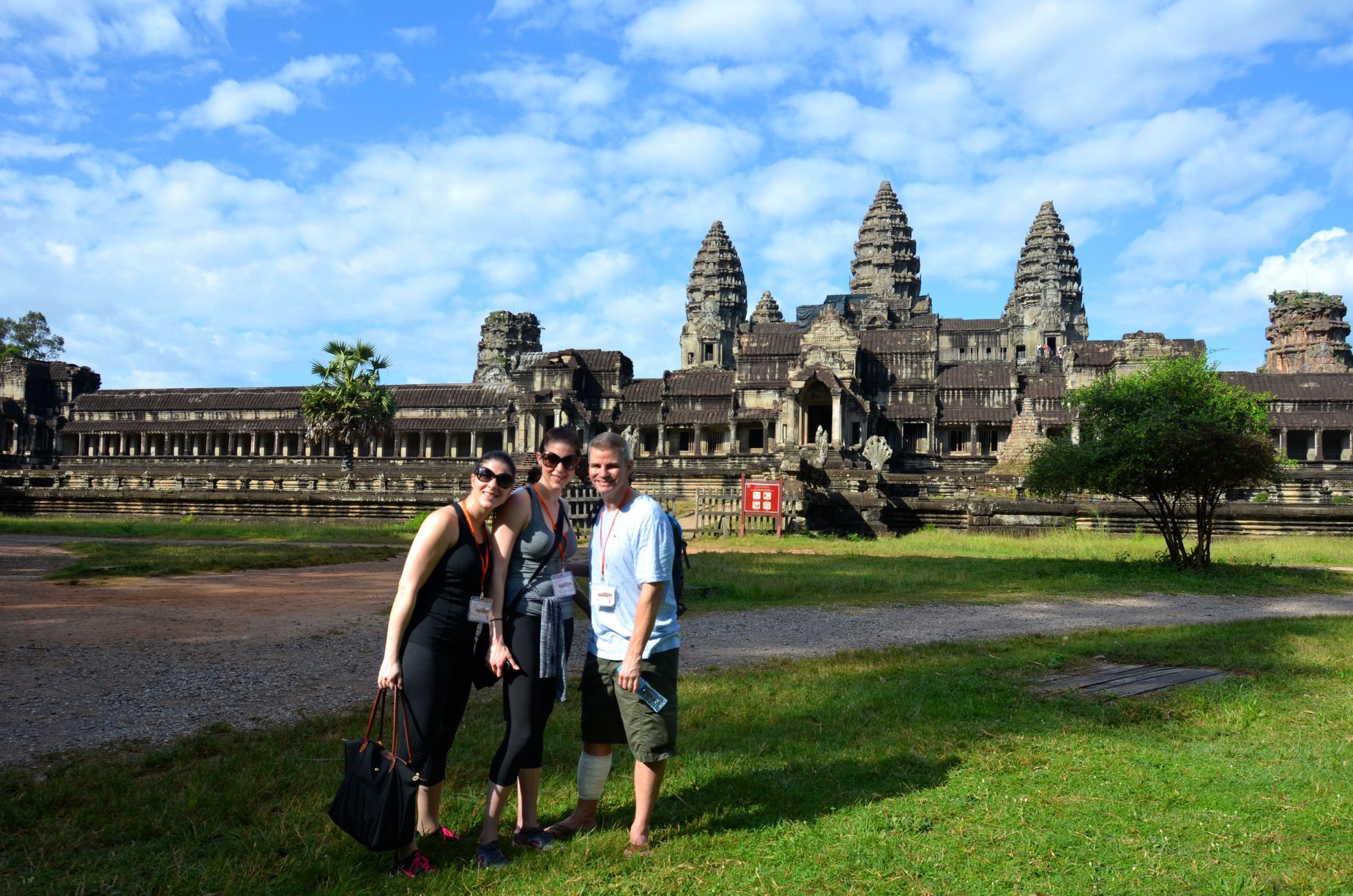
Remember, the temples are open air and in the middle of nature. So, wear cool, comfortable clothes, comfortable and closed walking shoes, mosquito repellent, sunscreen, a hat, and bring lots of bottled of water (and snacks!).
At each temple you will inevitably encounter children trying to sell you everything under the sun: post cards, magnets, t-shirts, trinkets. They are VERY persistent. They will walk with you and along side your car or tuk-tuk knocking on the windows. Just ignore them. It sounds mean, but it’s not. They literally will not leave you alone if you don’t. The minute you succumb and buy something, 100 more will come out of the woodwork. Trust me on this one.
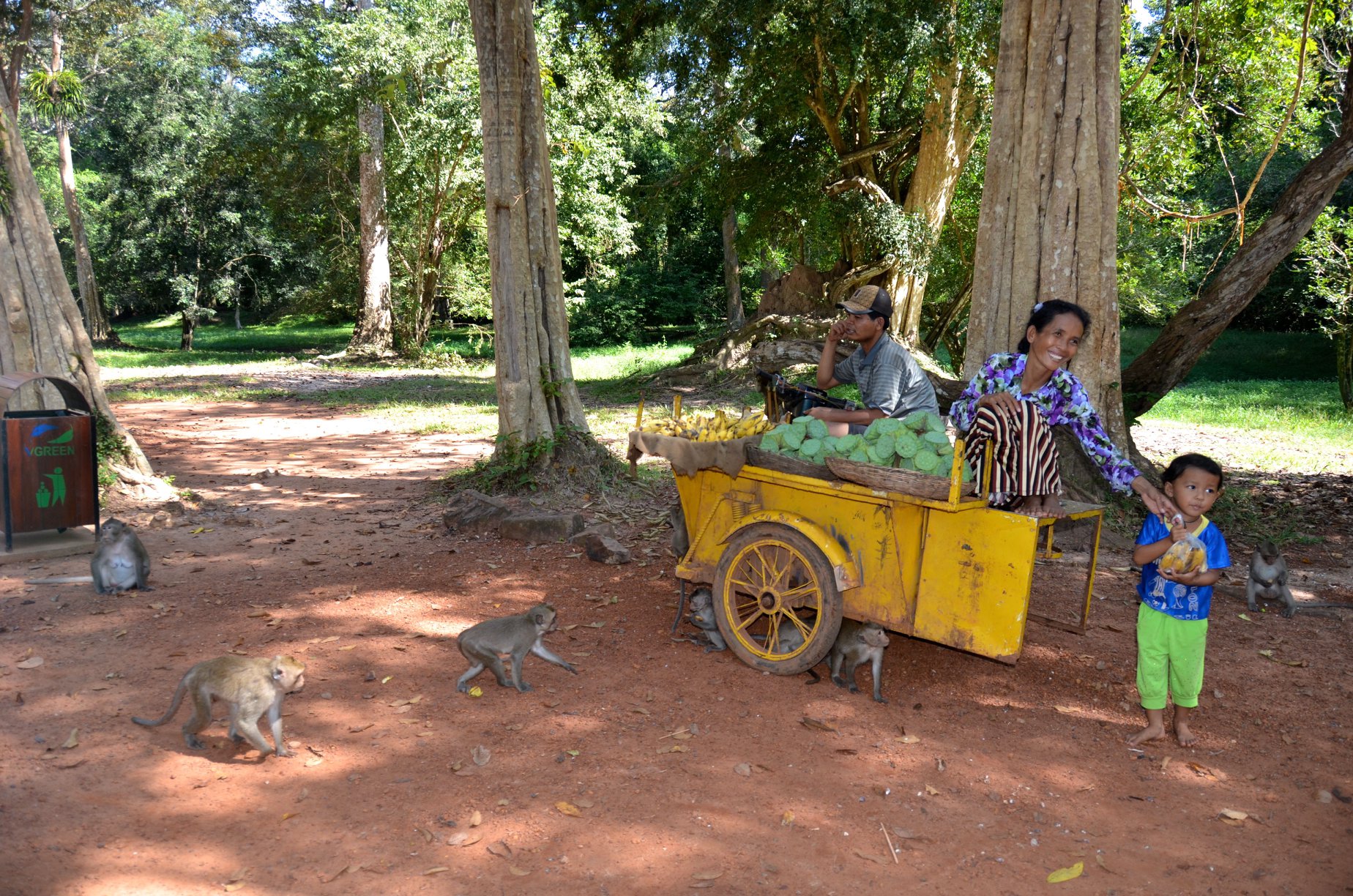
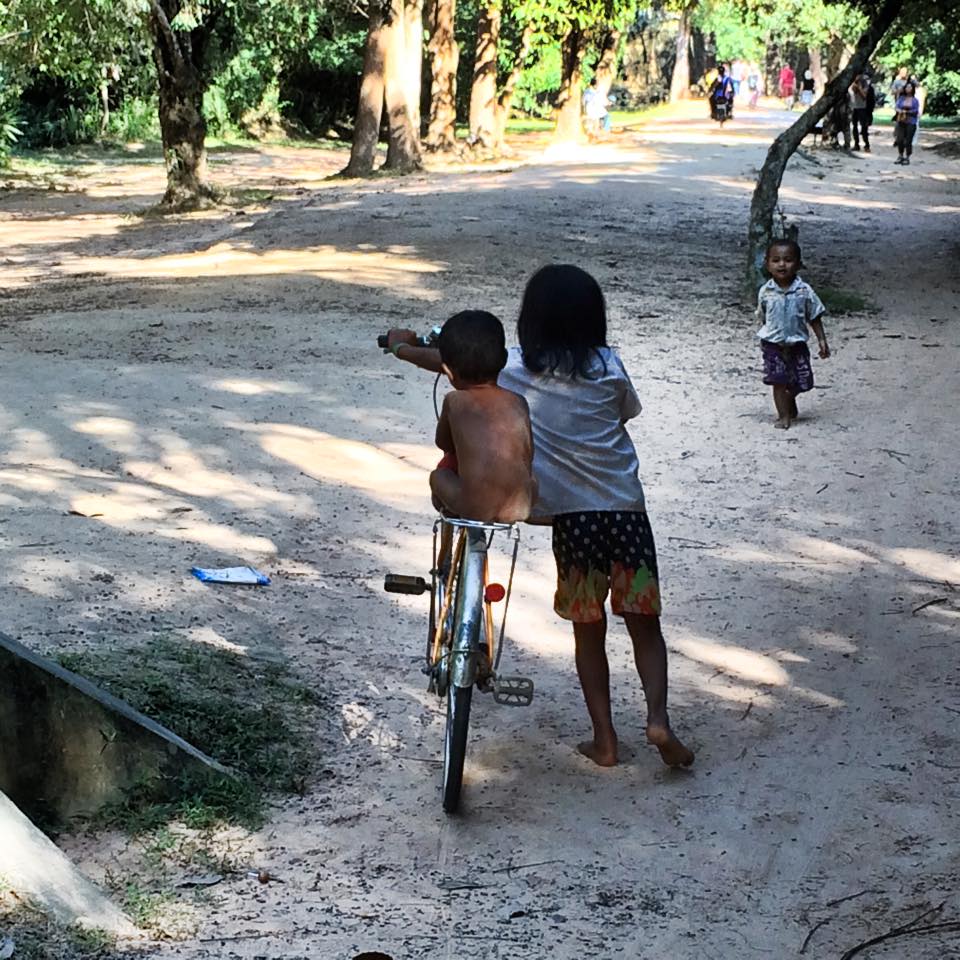
Beyond The Temples
In my experience, people either like Siem Reap or don’t really care for it. Our group was split down the middle. Other than the temples, we spent some time in a cool little artsy neighborhood that had some good local food spots and shops.
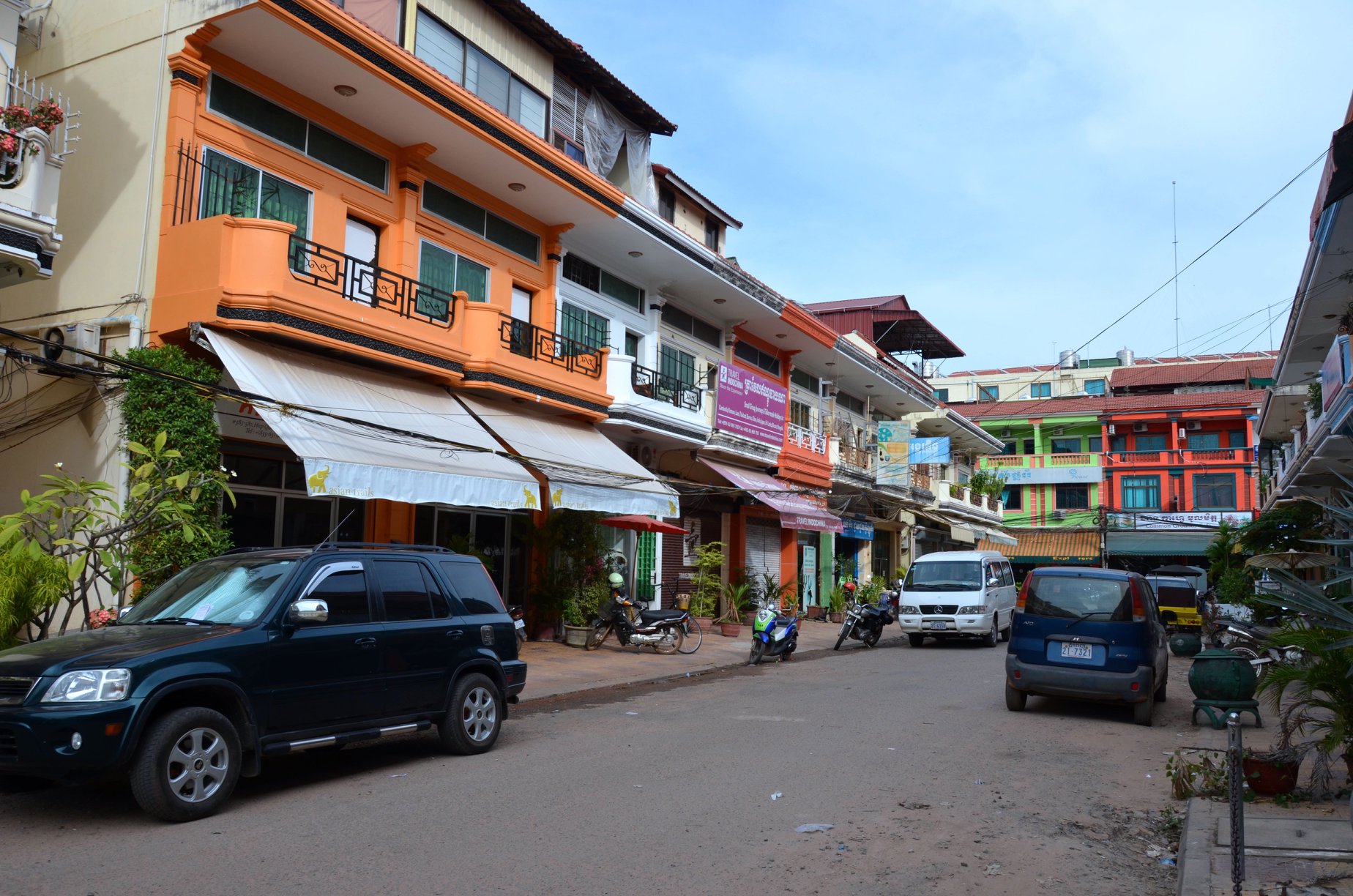
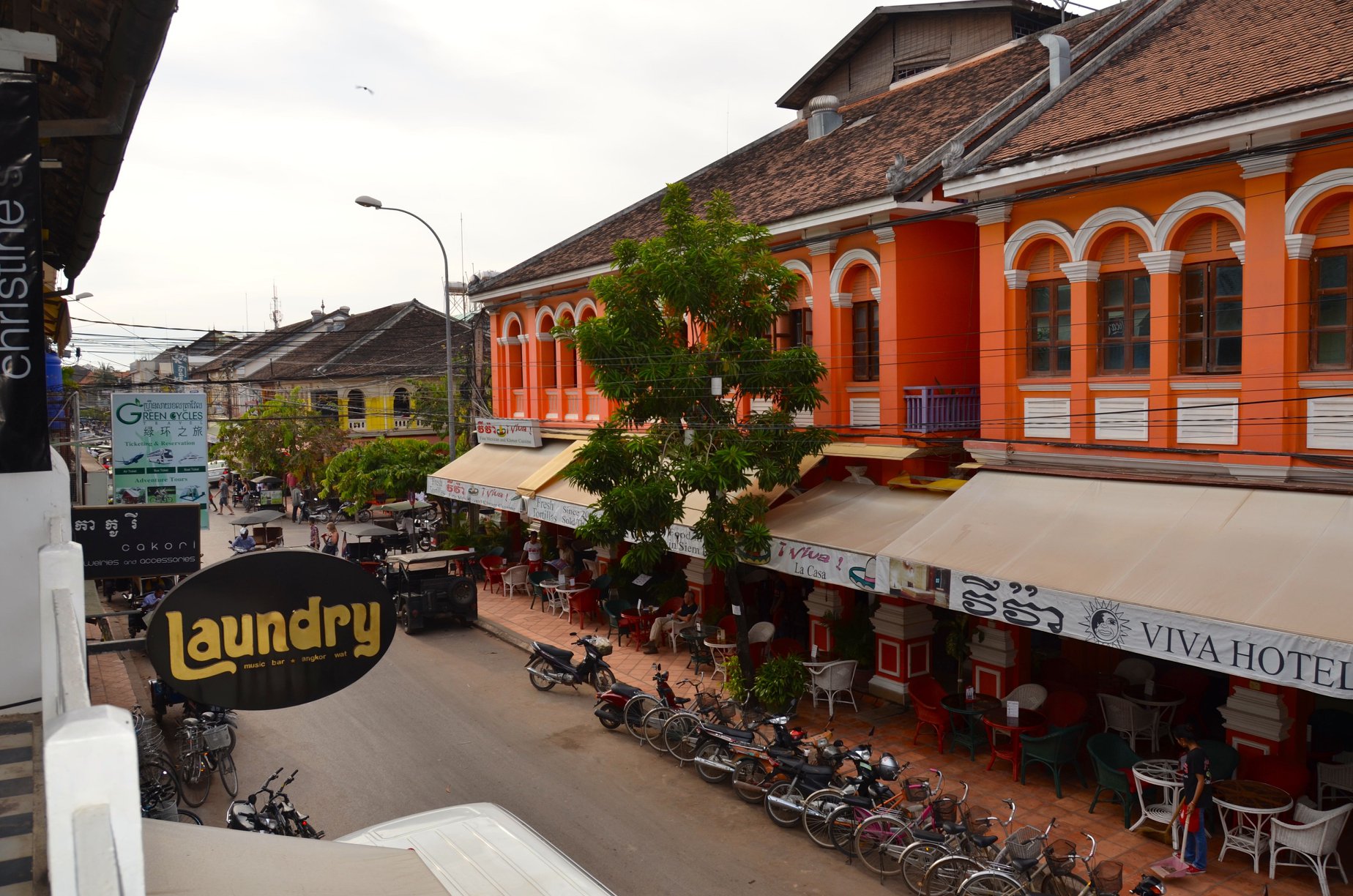
We visited Wat Thmey, which are Siem Reap’s killing fields. The killing fields are basically a mass grave of Cambodians killed during the 1970s as part of a state-sponsored genocide. If you are not familiar with Pol Pot and the Khmer Rouge, read about it here. Basically, he was a Cambodian communist dictator in the 1970s. He was so mistrusting that he initiated a state-sponsored genocide. He killed all the smart people, all the professionals, and all the artists. If you wore glasses, you were killed. He was directly responsible for the deaths of more than one million innocent Cambodians; murders carried out in the most cruel and diabolic ways imaginable. This genocide effectively caused, for lack of a better term, a brain drain in Cambodia. This was a sad, but incredibly moving experience. And, it was certainly different from our temple experience.
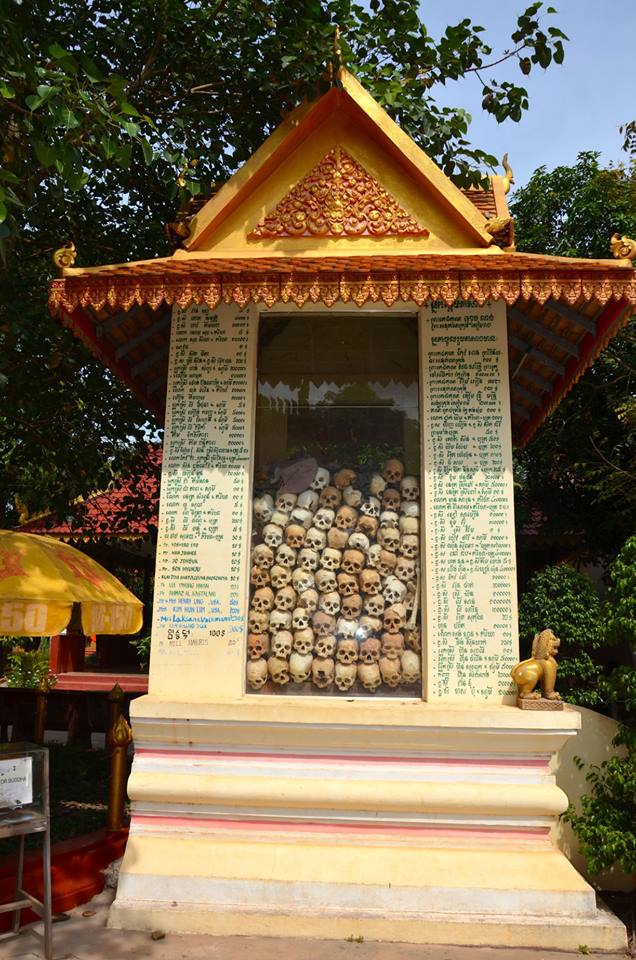
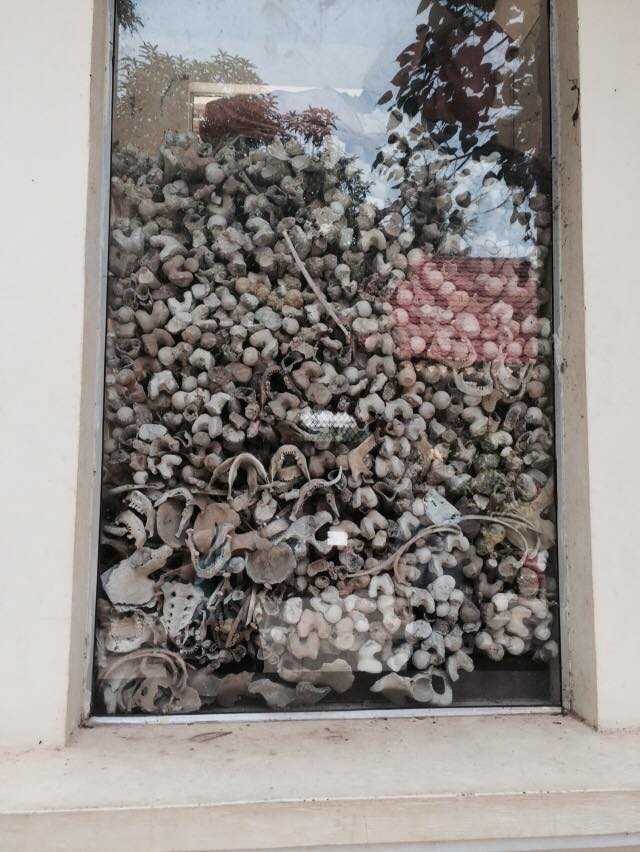
We also traveled along Lake Tonle Sap and had a sunrise blessing with the monks at a local temple.
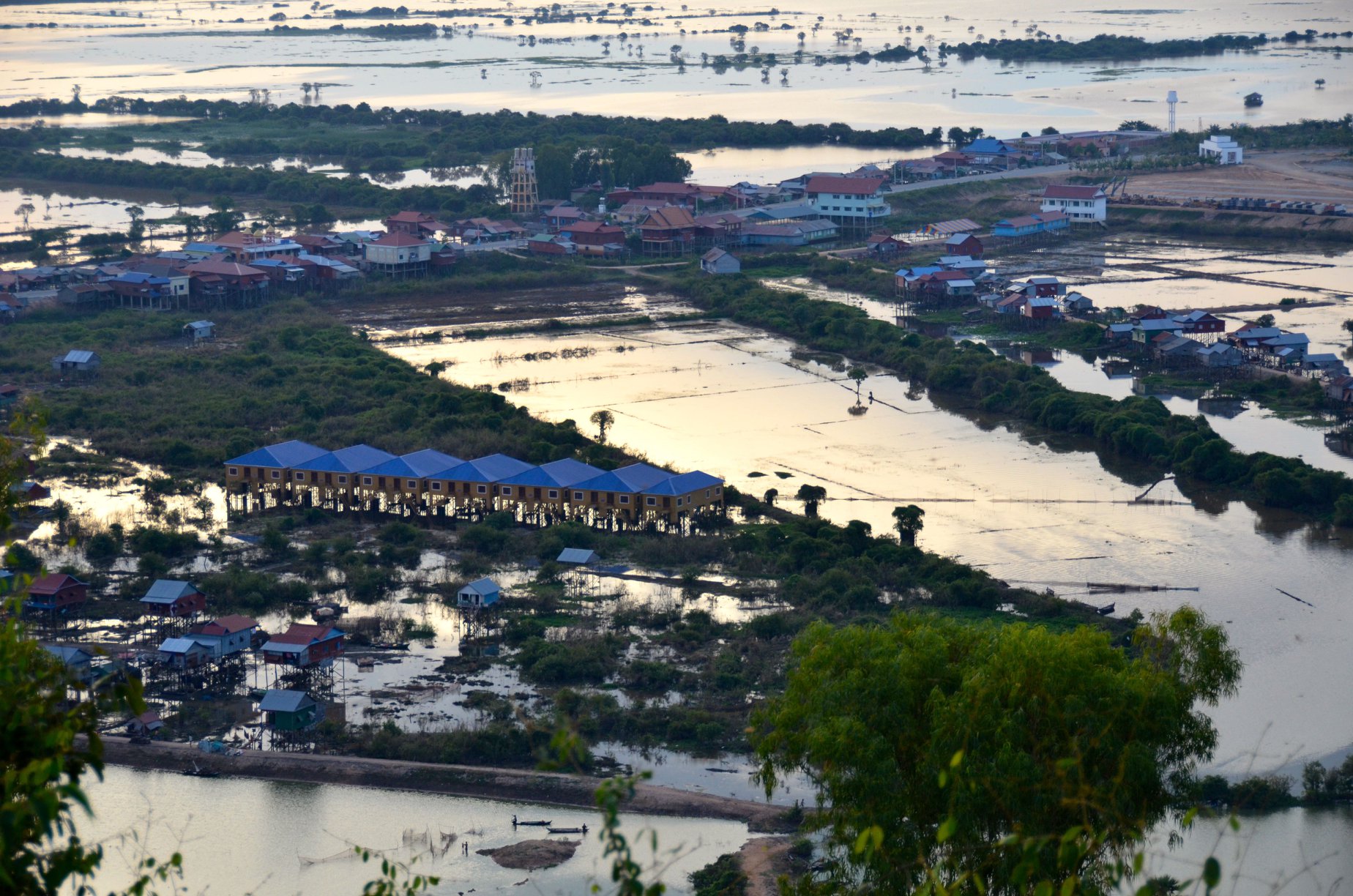
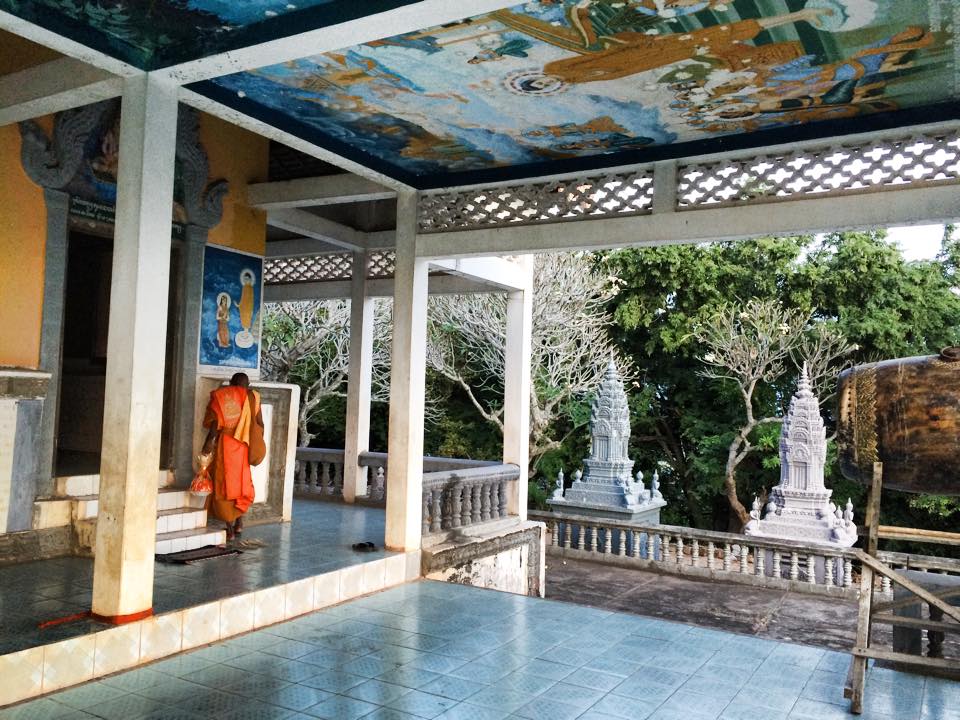
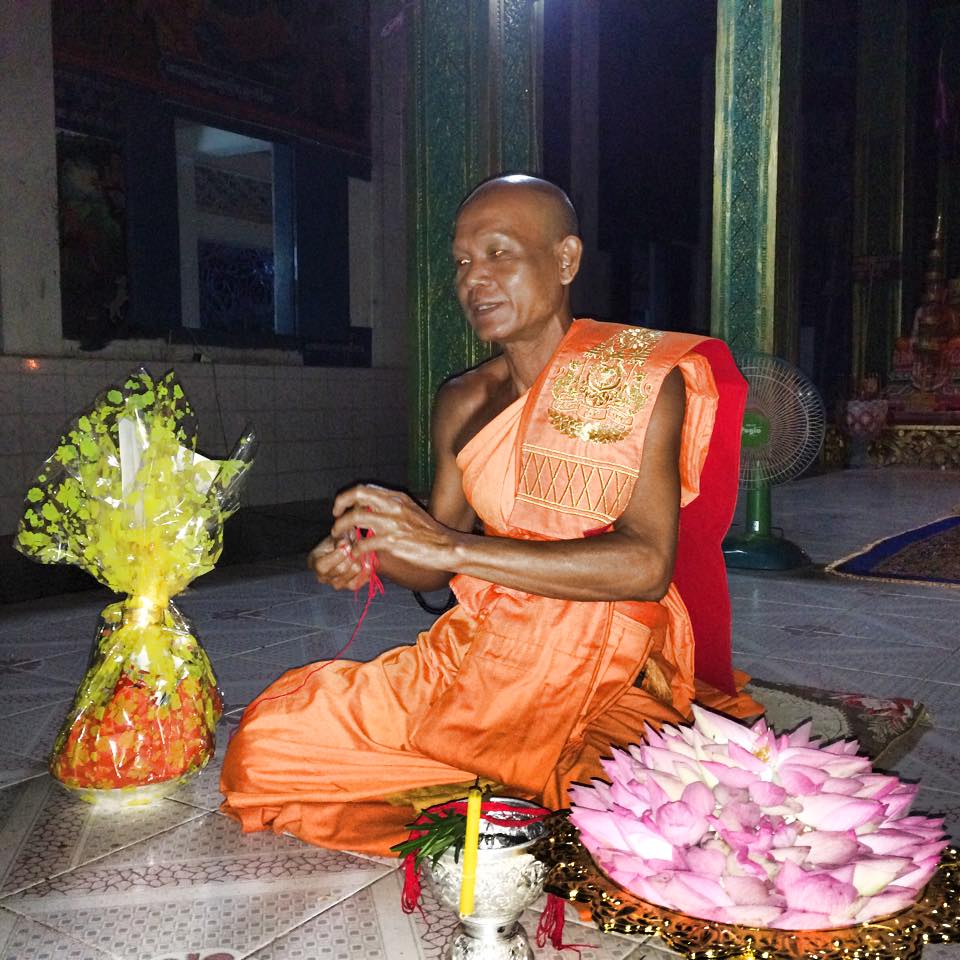
You travel through many remote villages, so you get to see a lot of locals going about their day.
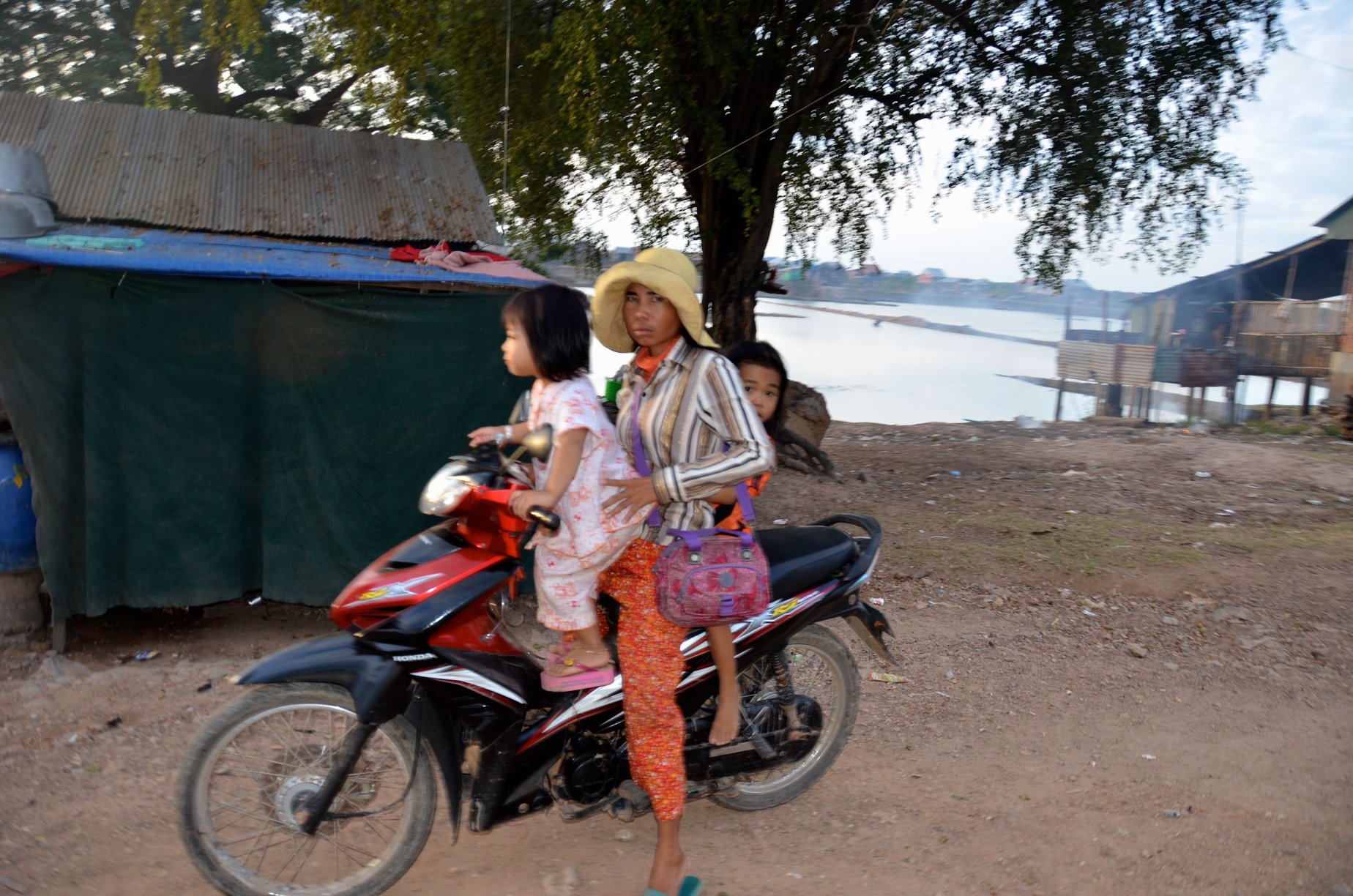
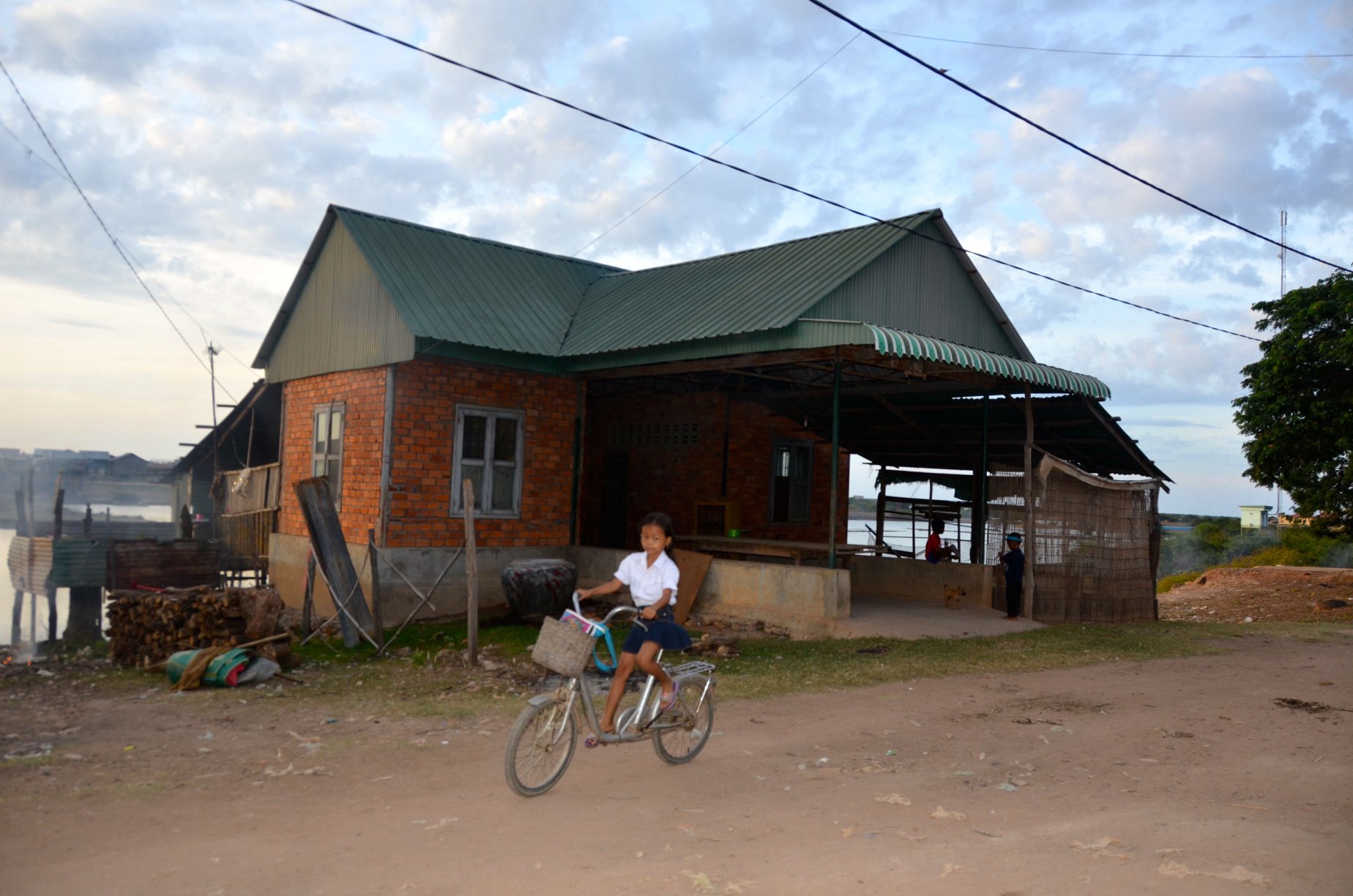
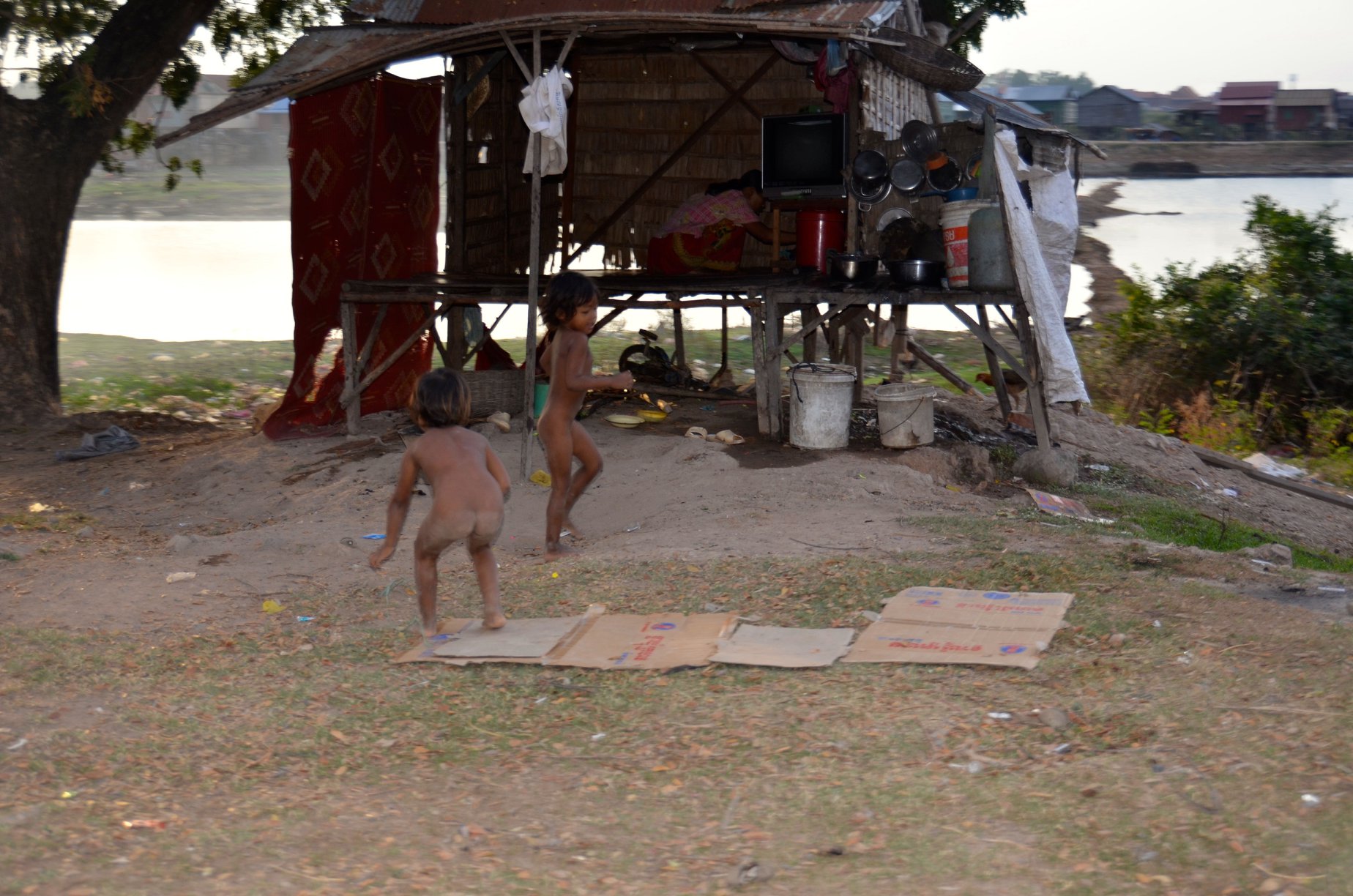
Other things to do include shopping the night market, especially the Old Market or visiting Pub Street for a night cap.
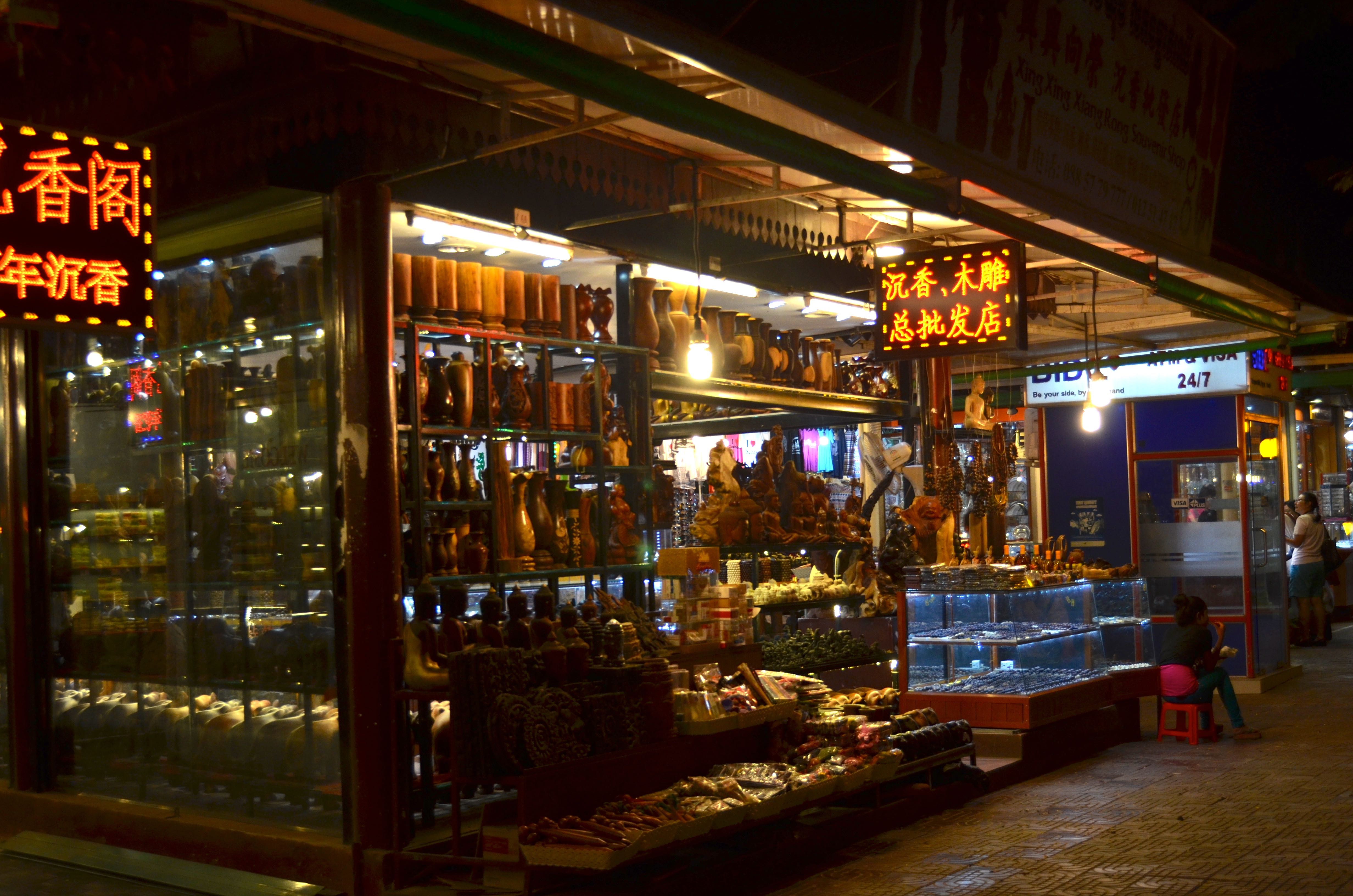
If you like museums, there is a Landmine Museum. This museum was started by a young man who began to clear landmines with a stick, collecting the explosive, and charging people a dollar to see his collection. The personal exhibition was shut down and later relocated and reopened. The new museum has four galleries and is home to 27 children. There is also the Angkor National Museum, which is dedicated to the collection, preservation, and presentation of artifacts from Angkor.
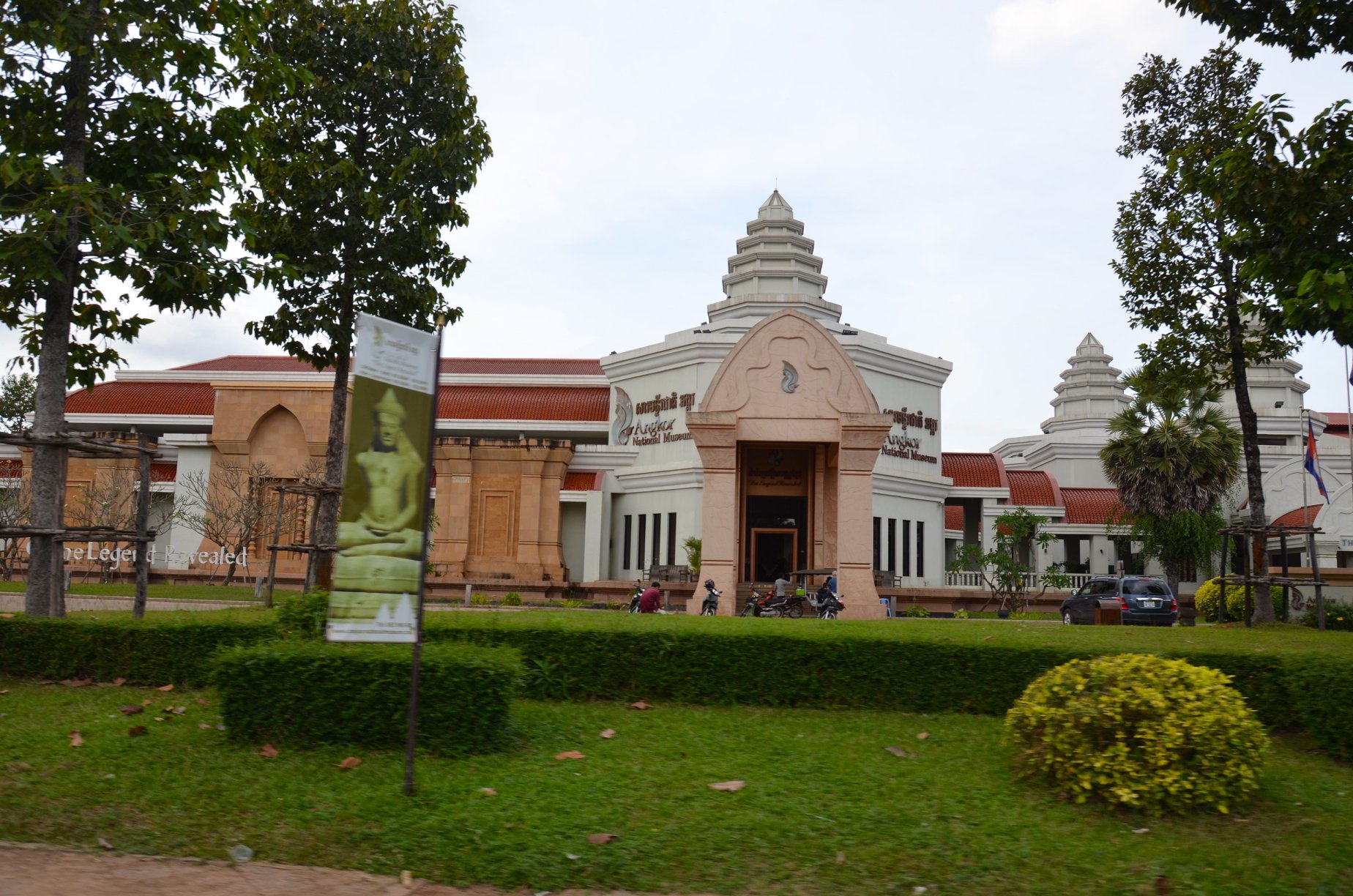
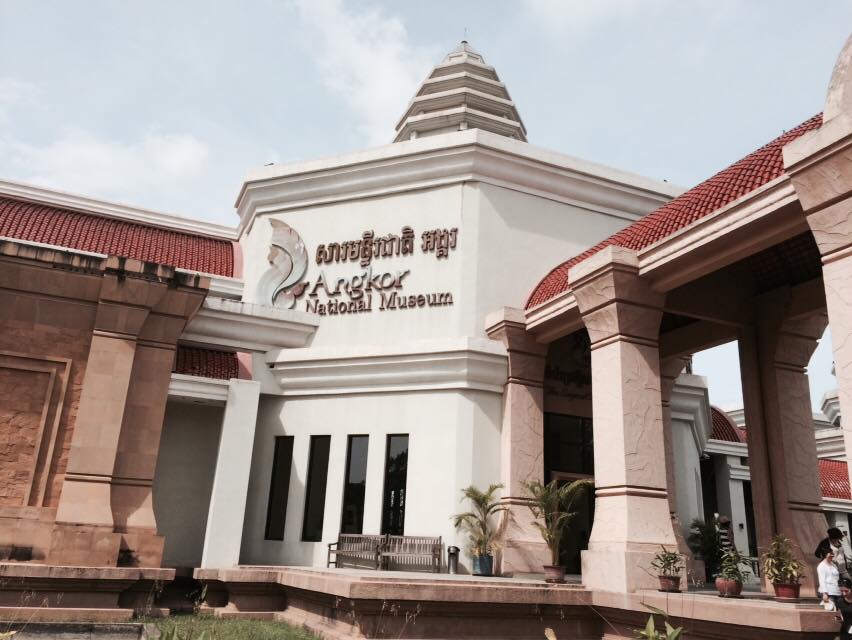
Siem Reap is an easy “add on” to any trip to Southeast Asia. Angkor Wat alone makes it worth the trip, as it is one of the most spiritually exhilarating and awe-inspirng places on Earth. But, aside from that, once you’re there, I think you will find there is more to this quirky little city than just Angkor Wat. Just remember, you will need a visa to enter Cambodia, which can be purchased at any port of entry (or prior to arrival). To obtain the visa, your passport must have six months of validity and one empty page. The visa is good for one month.
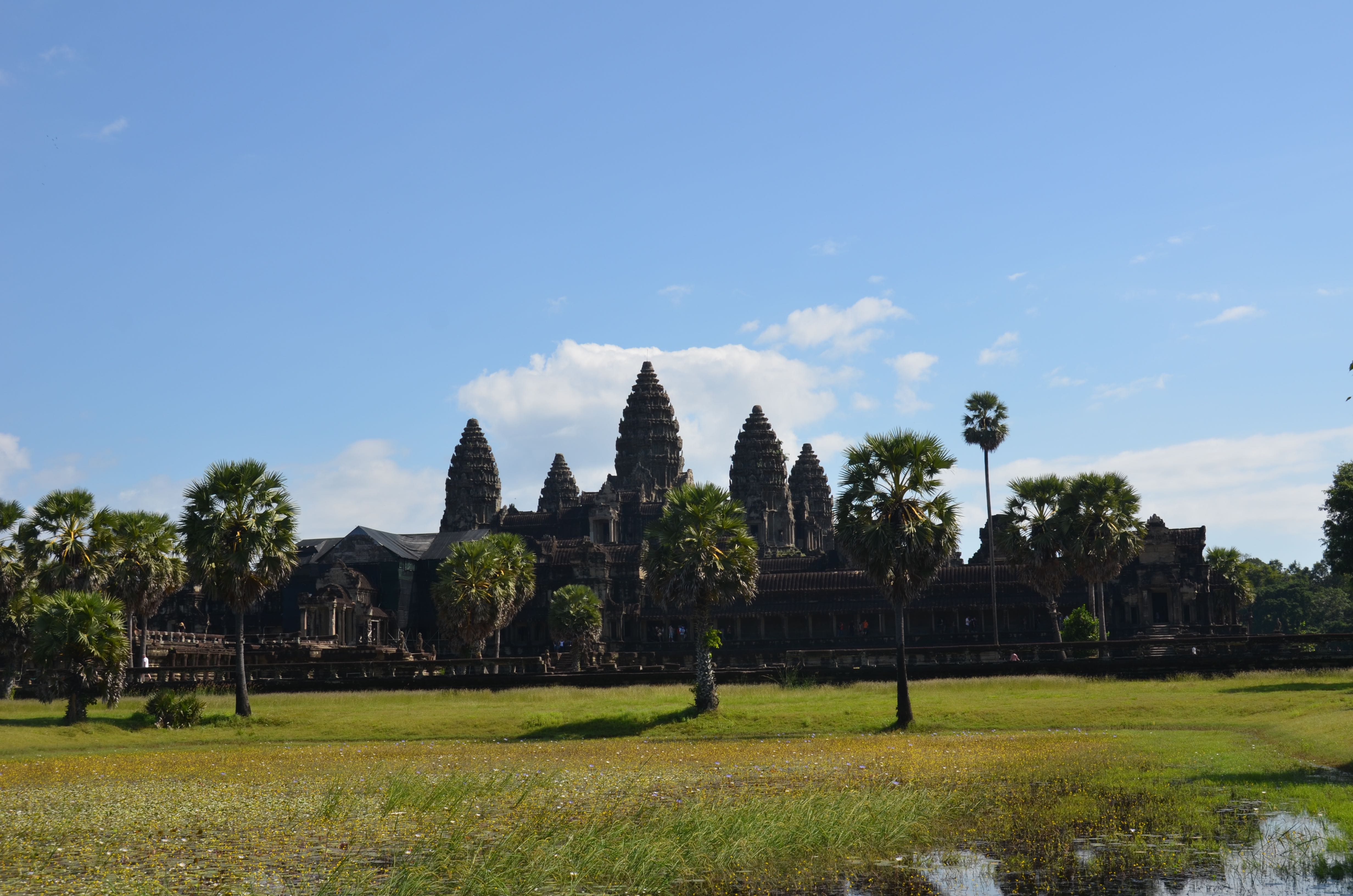
I hope this post has inspired you to visit the Kingdom of Wonder. If it has, please leave a comment or share this post with your friends!

Speak Your Mind